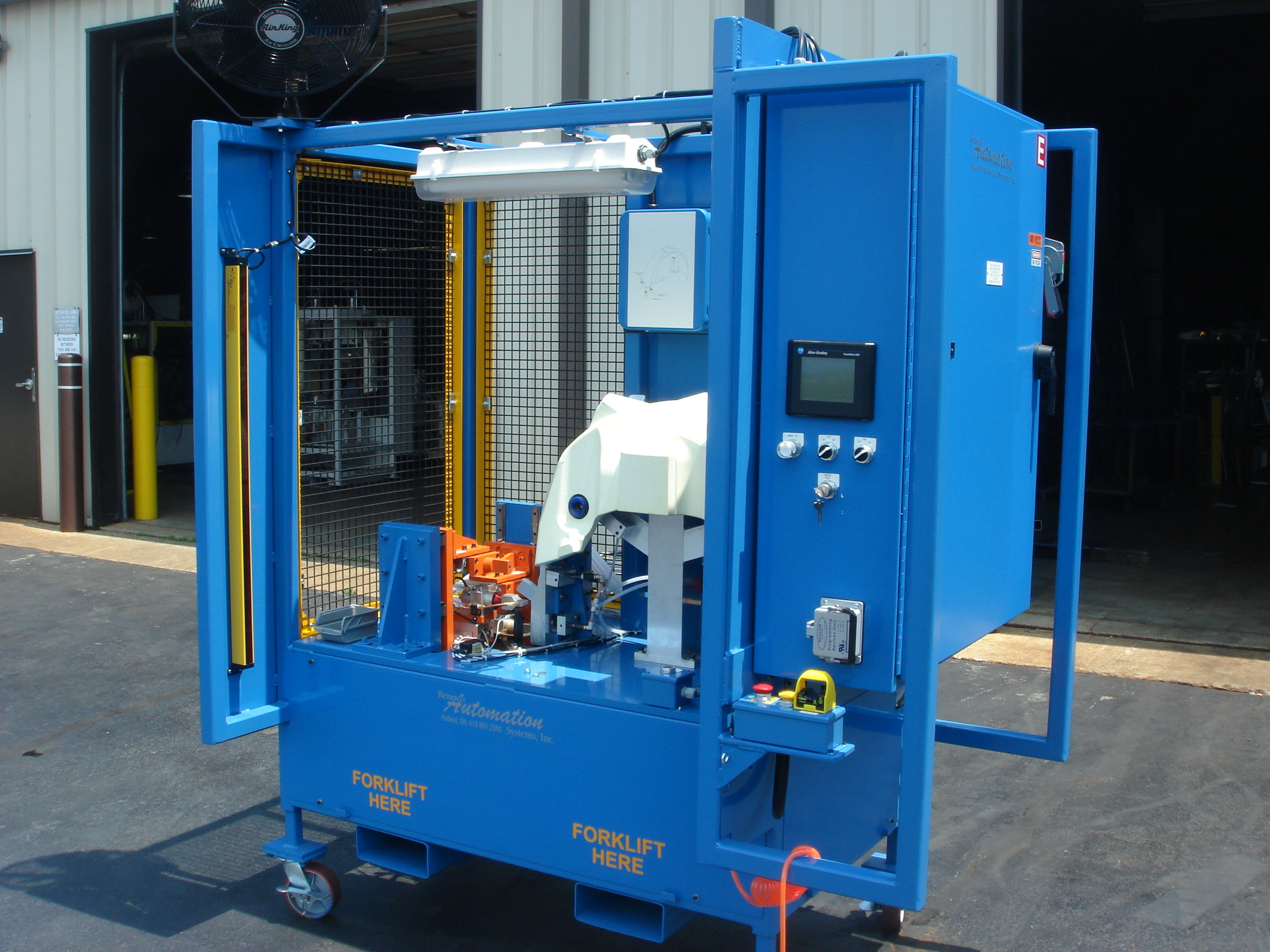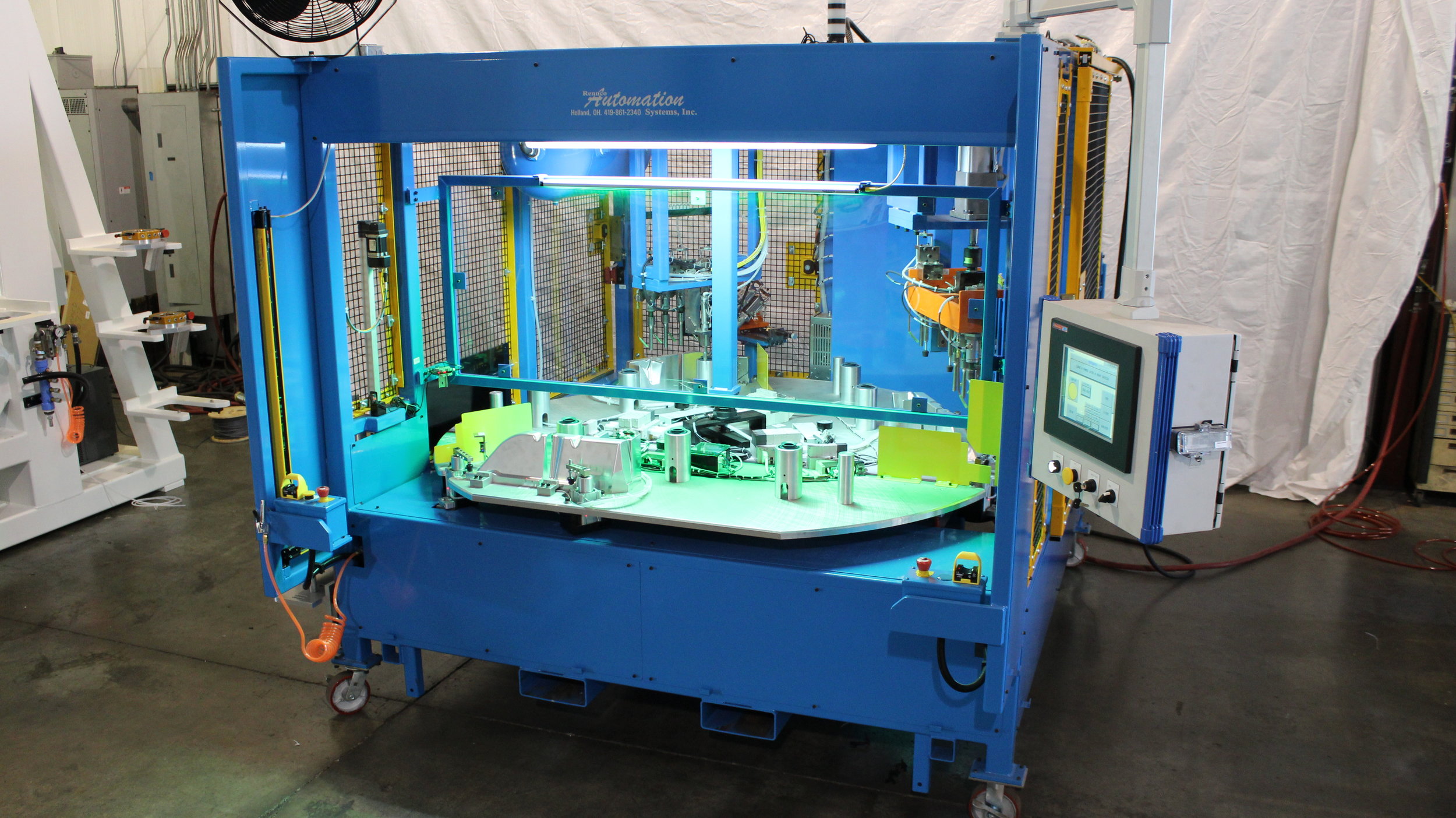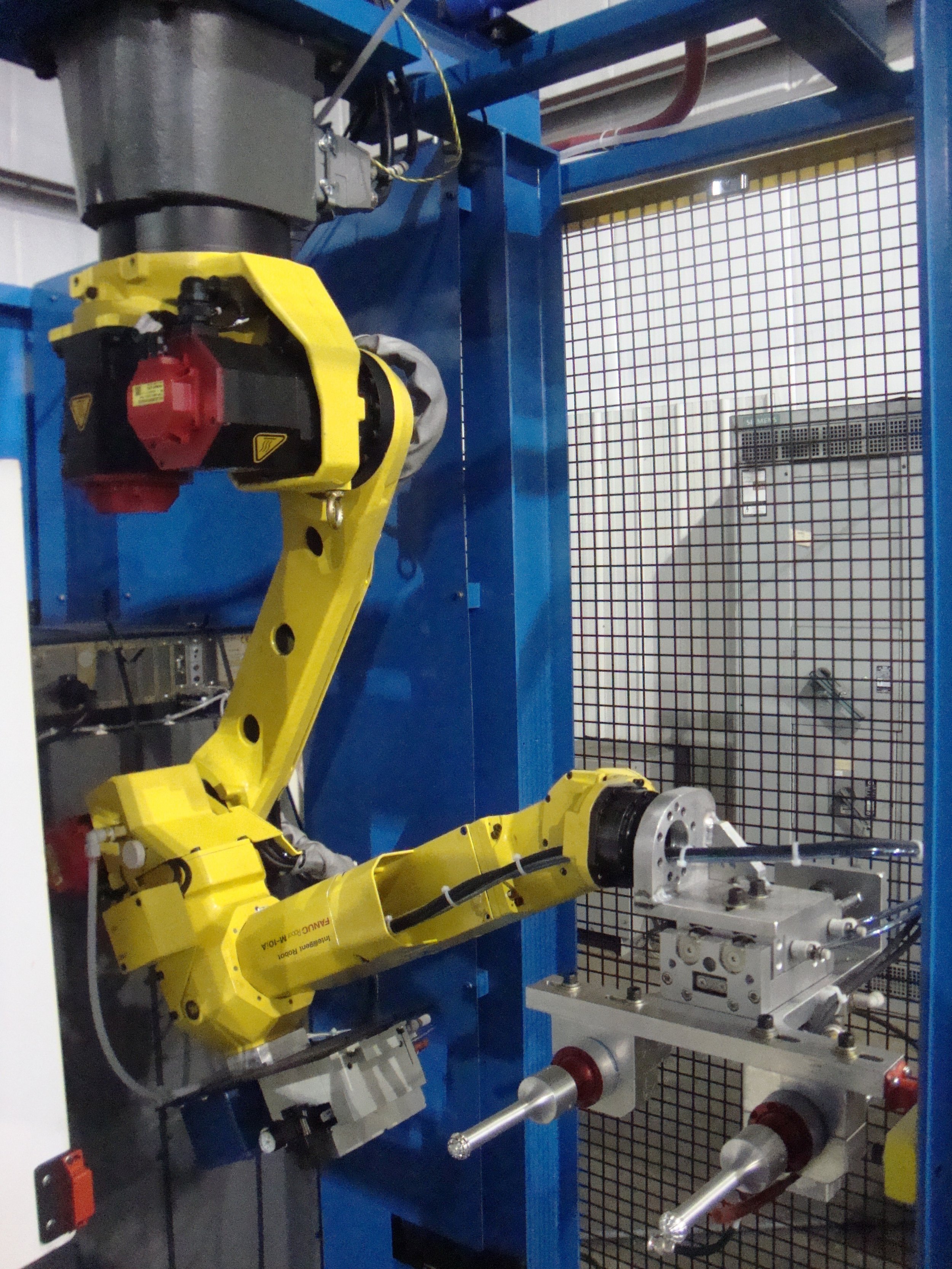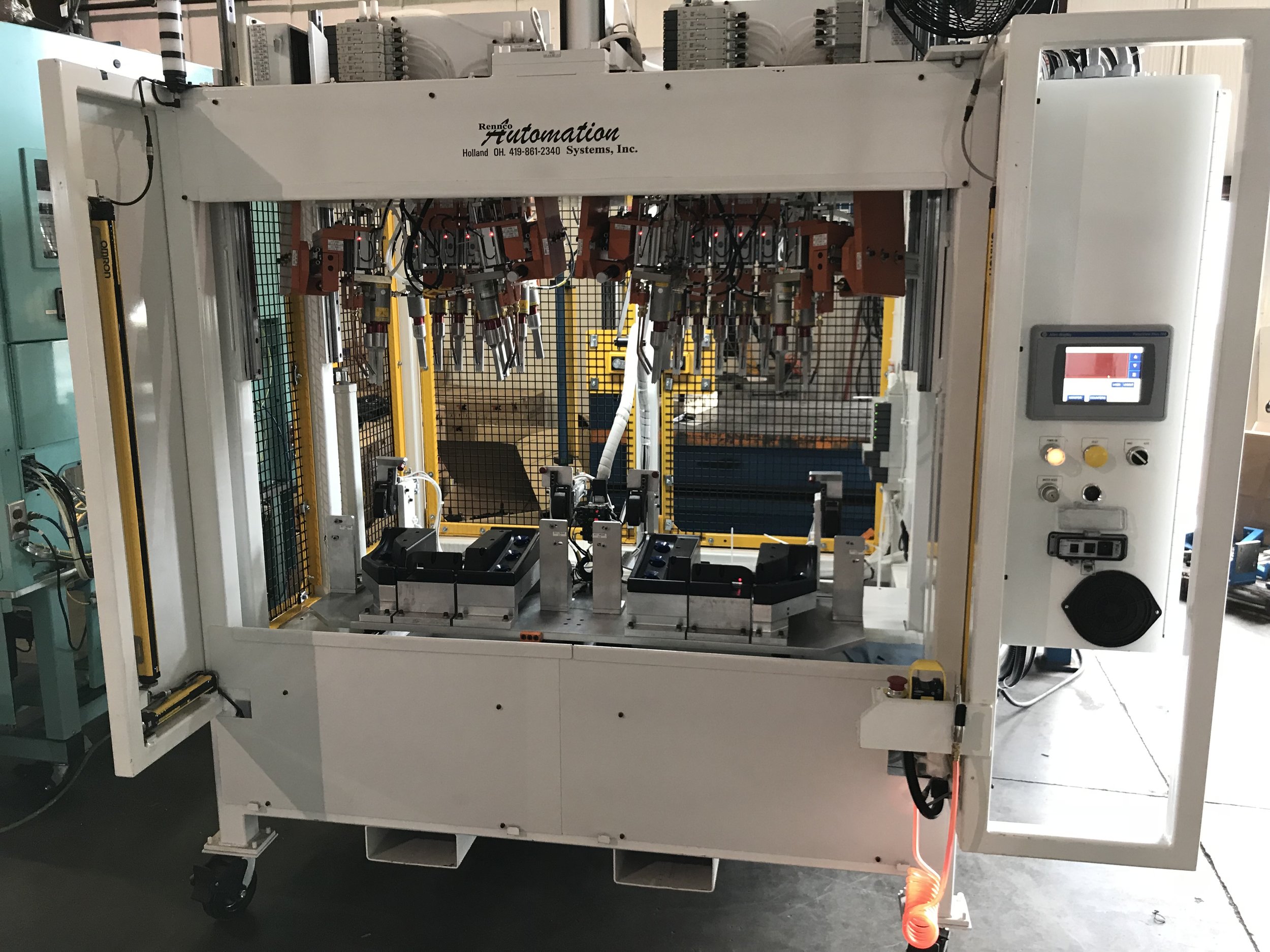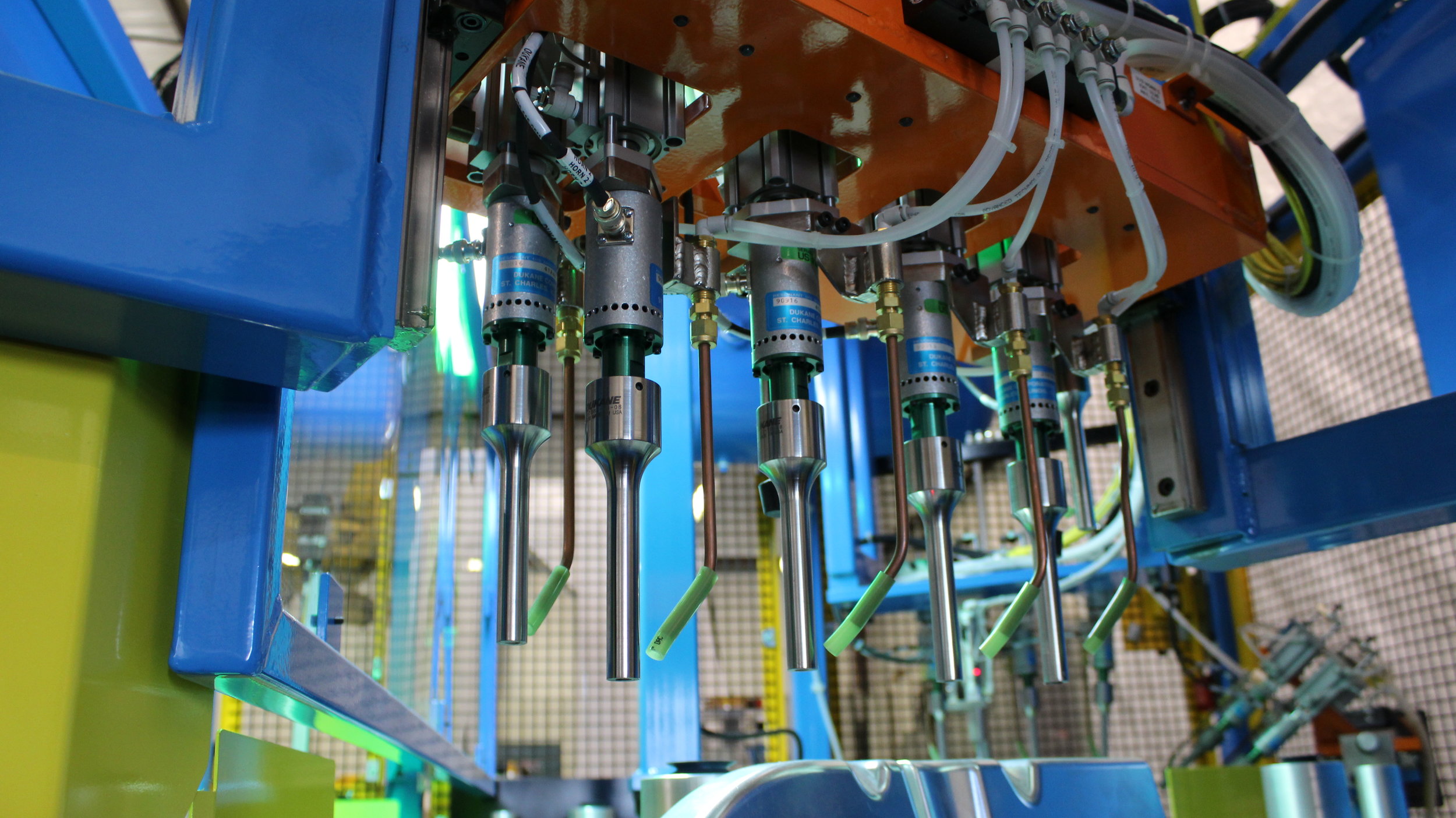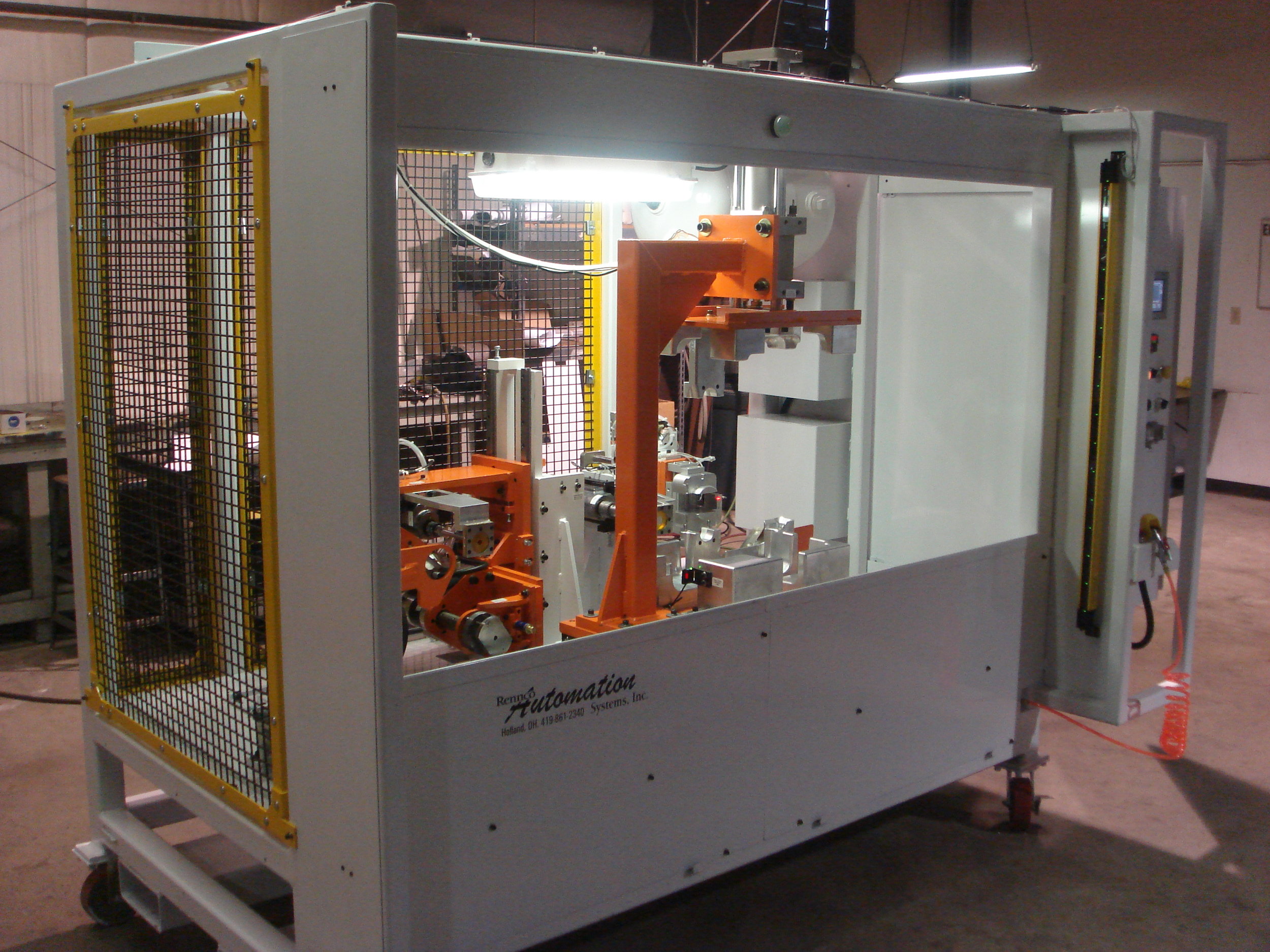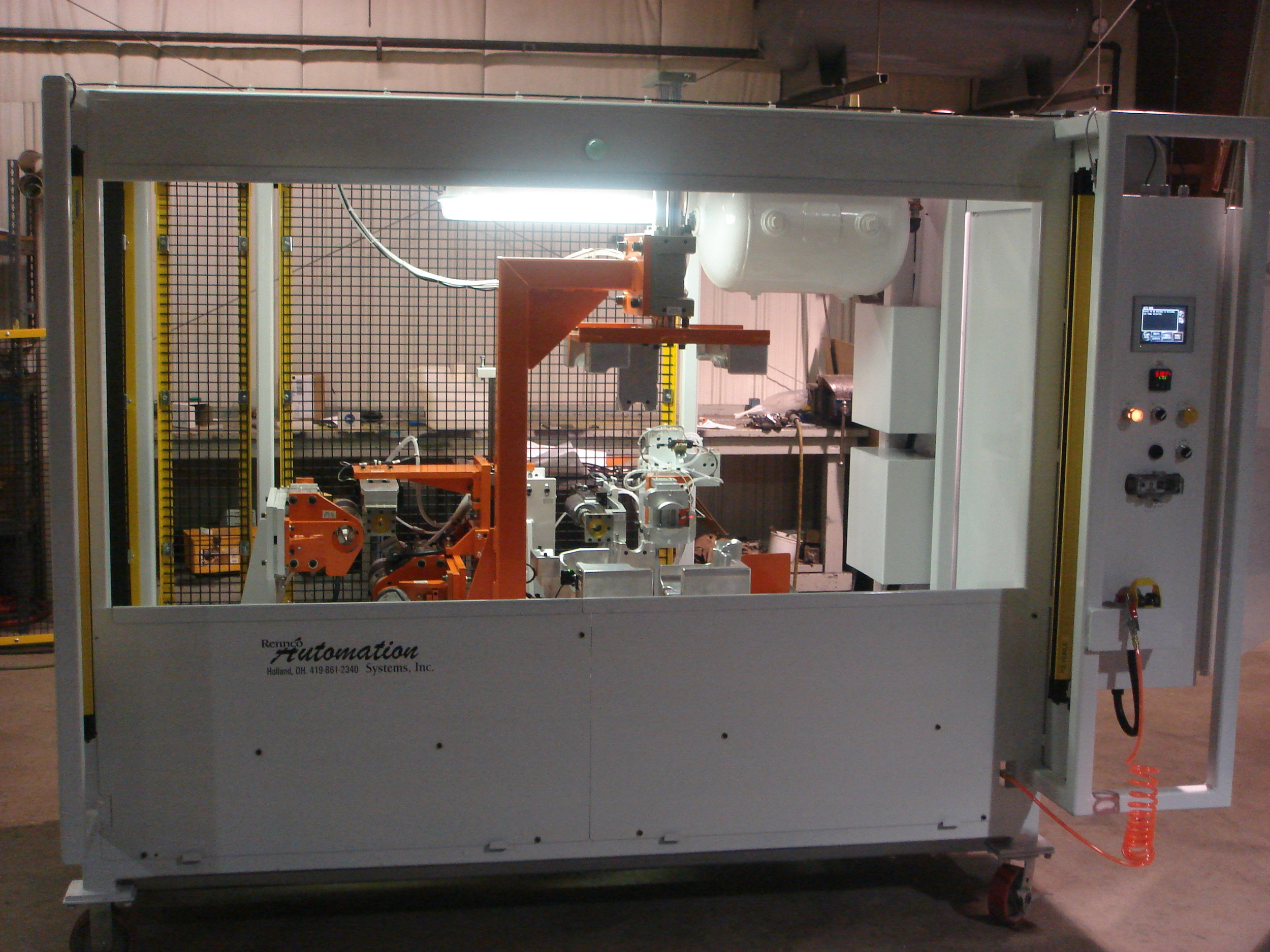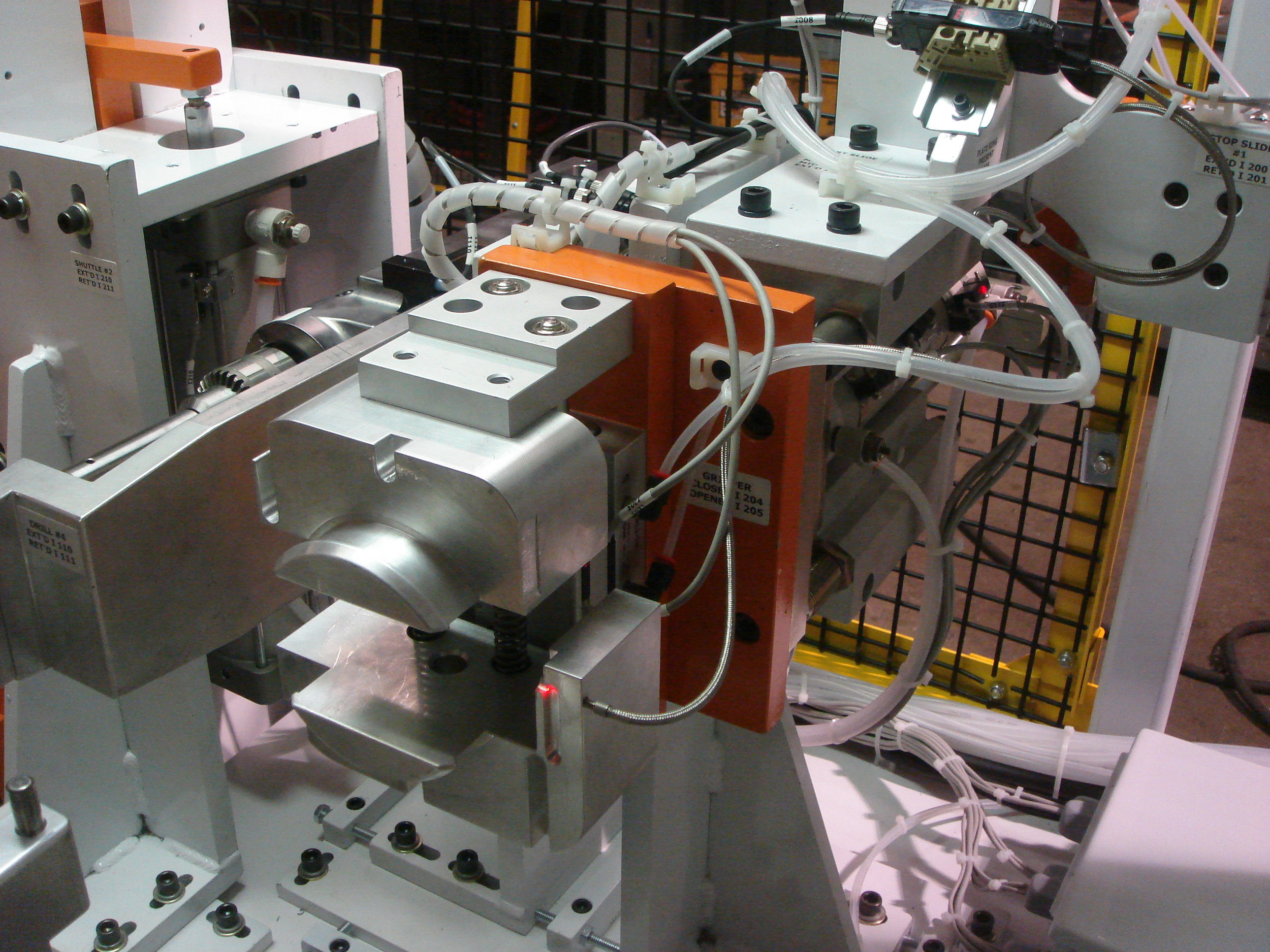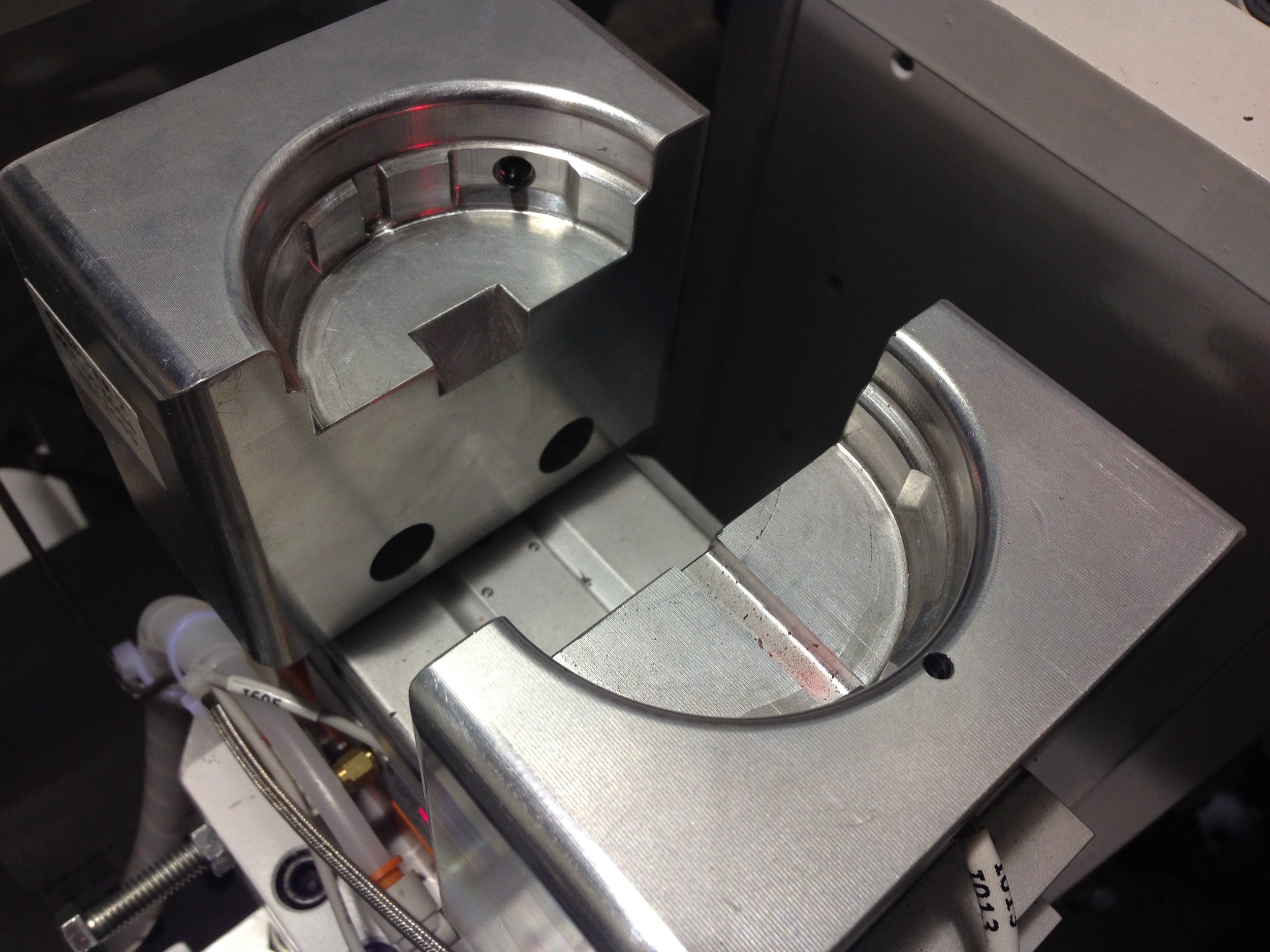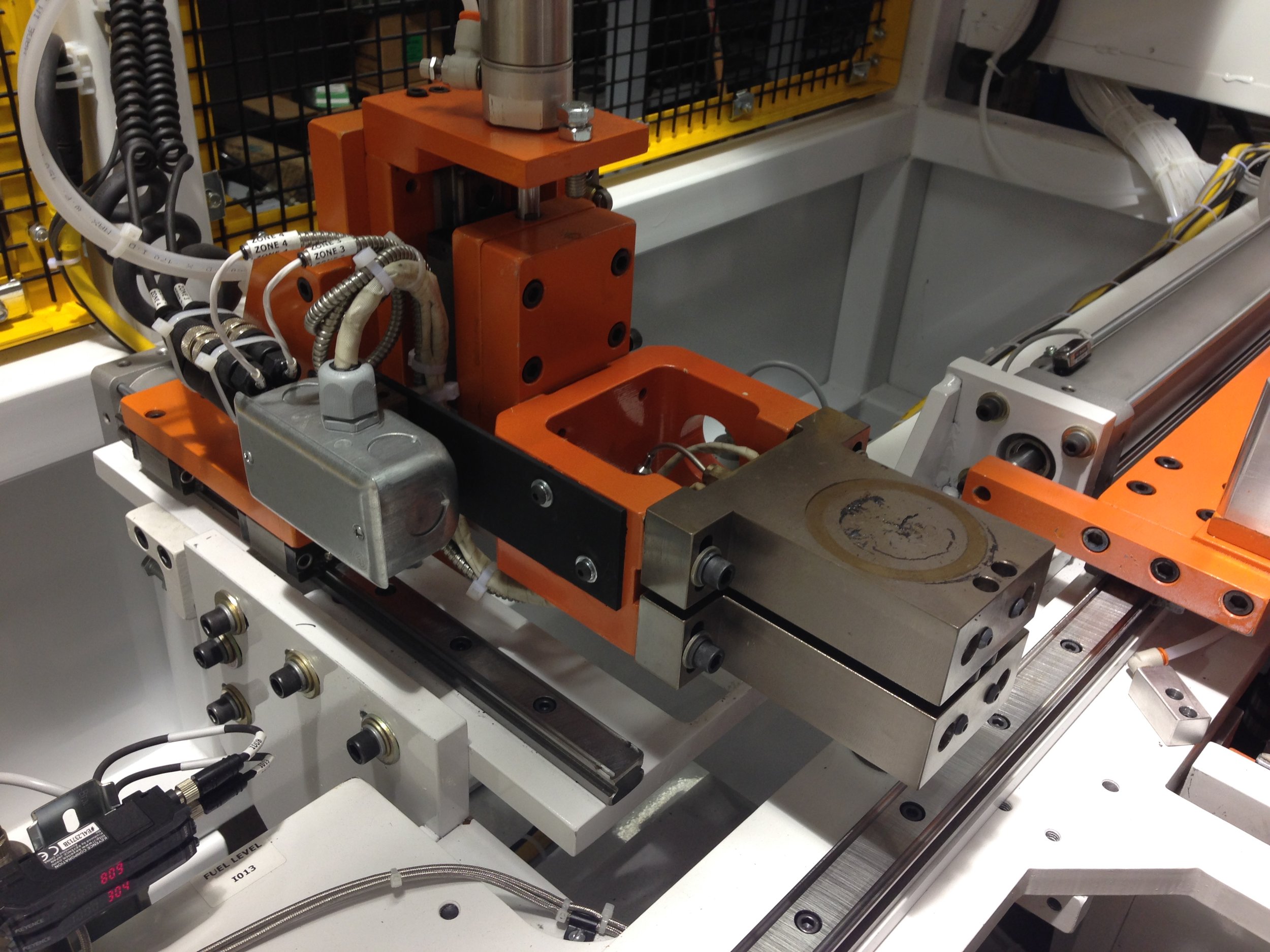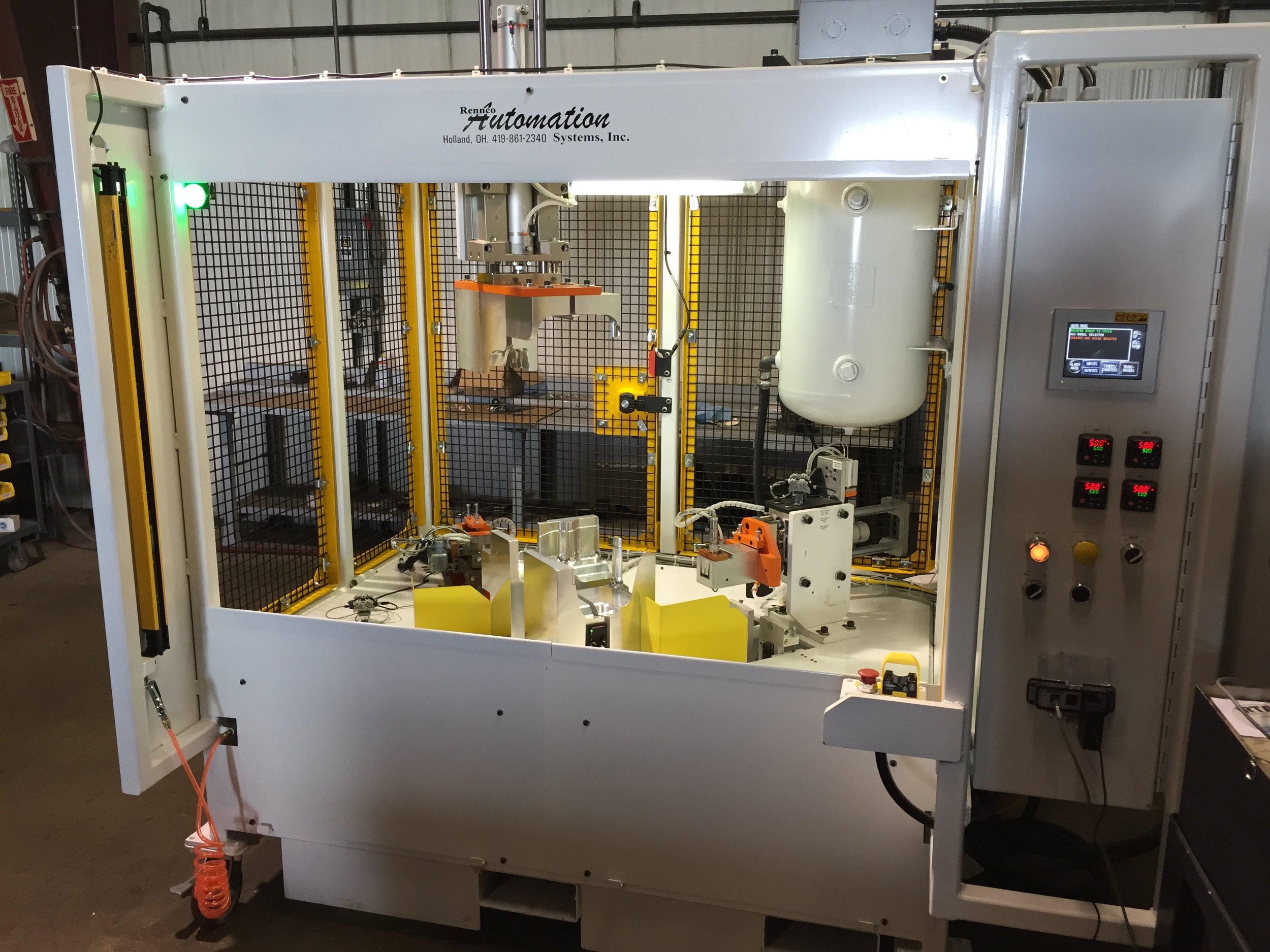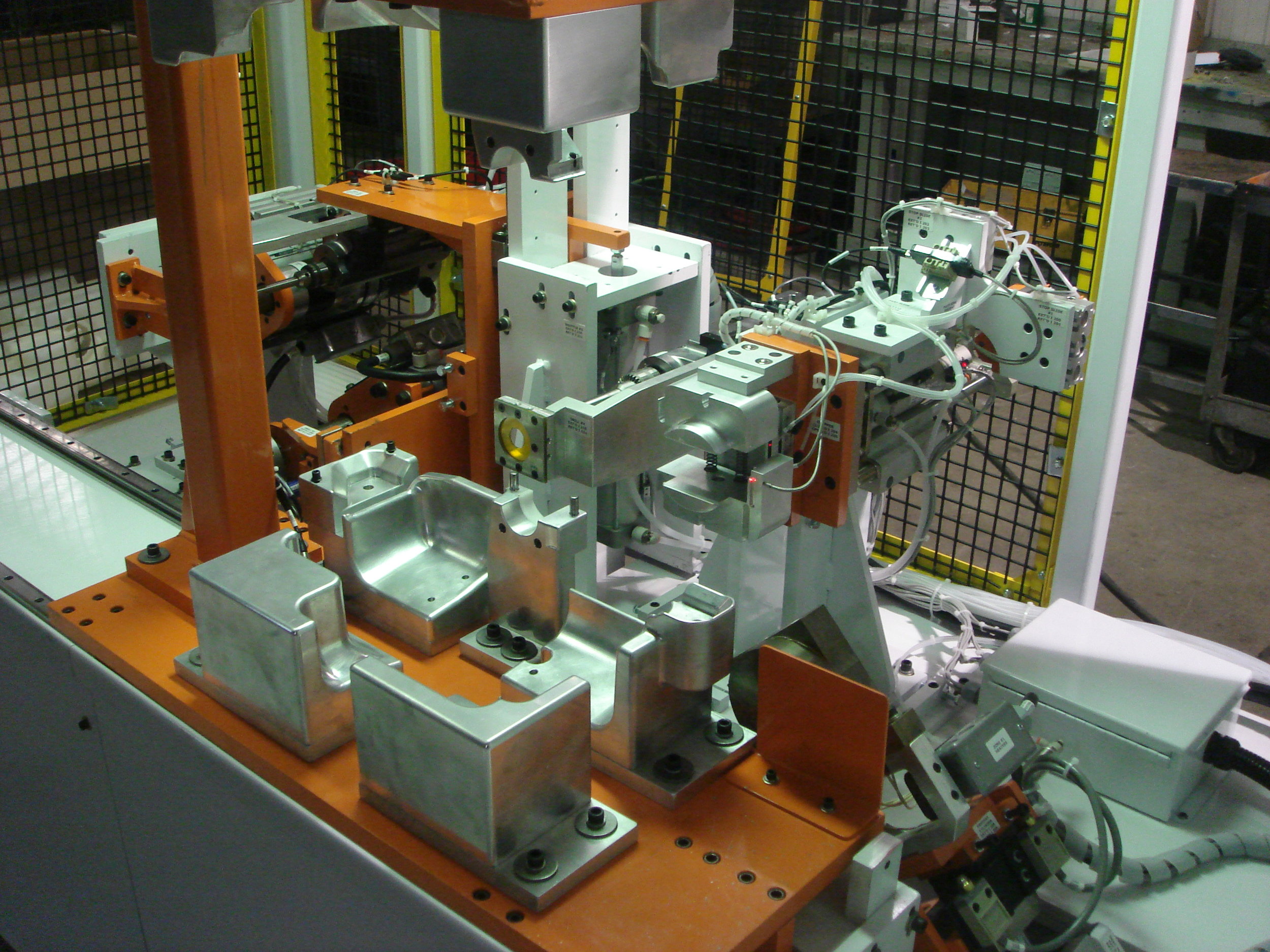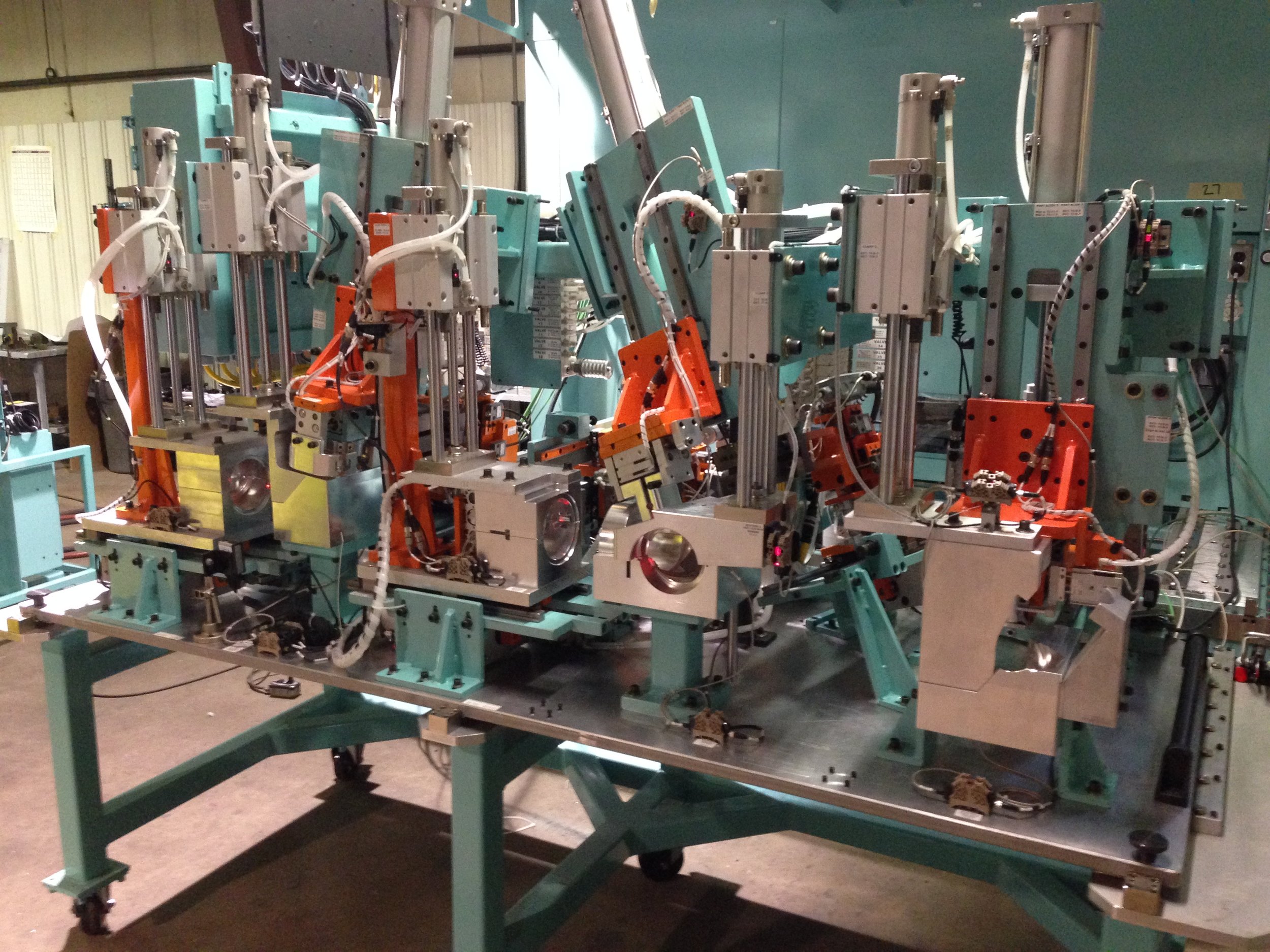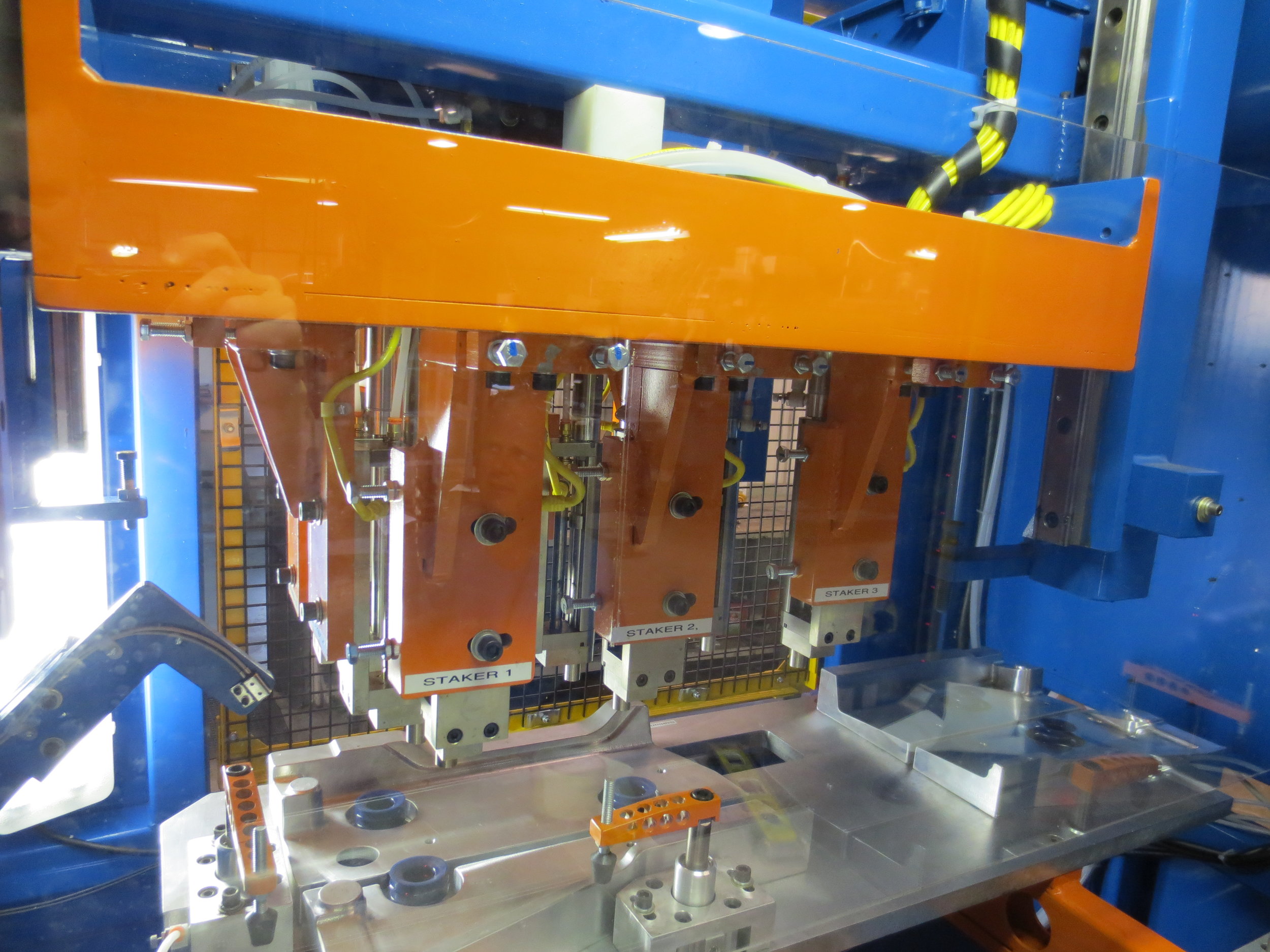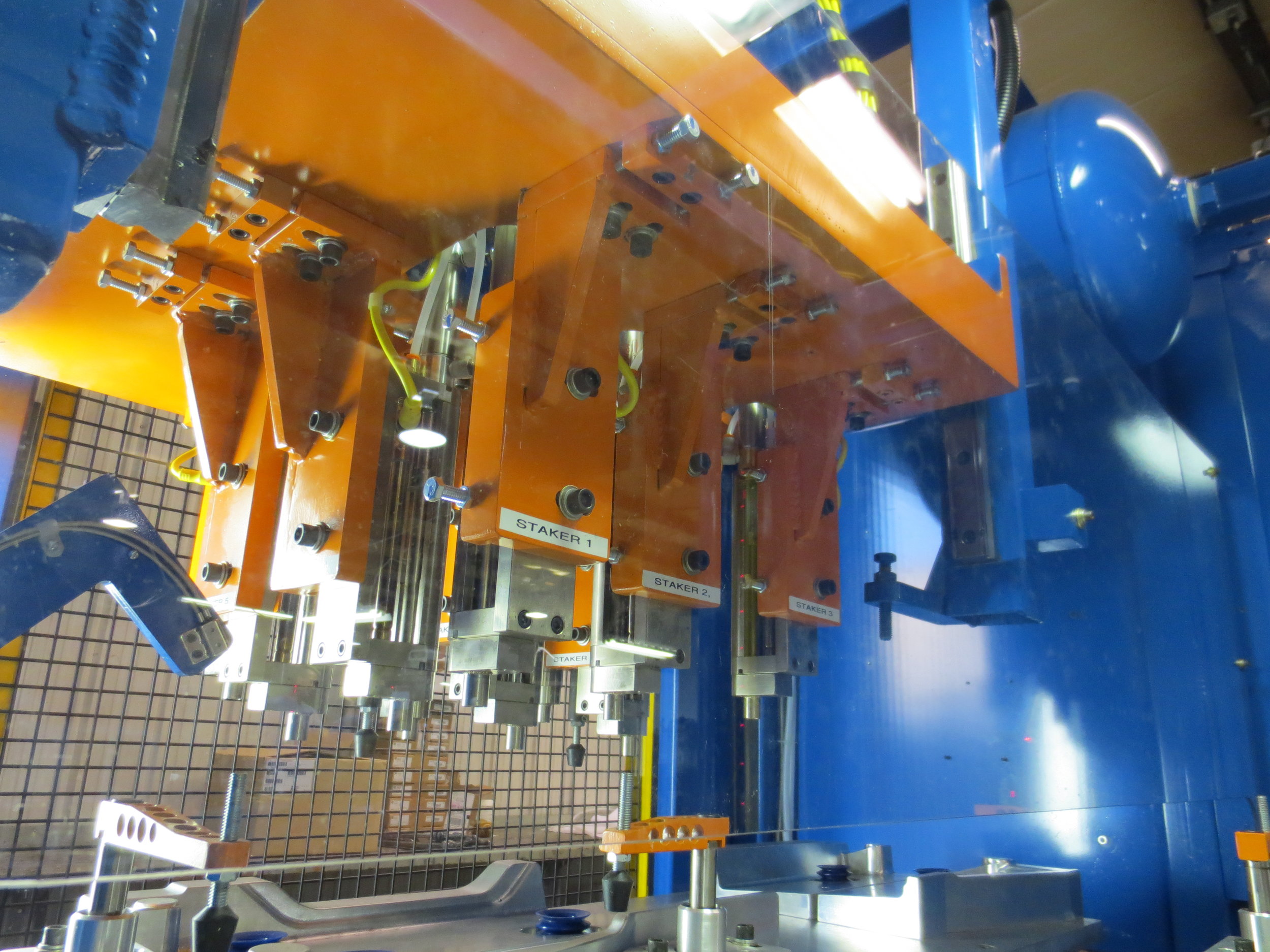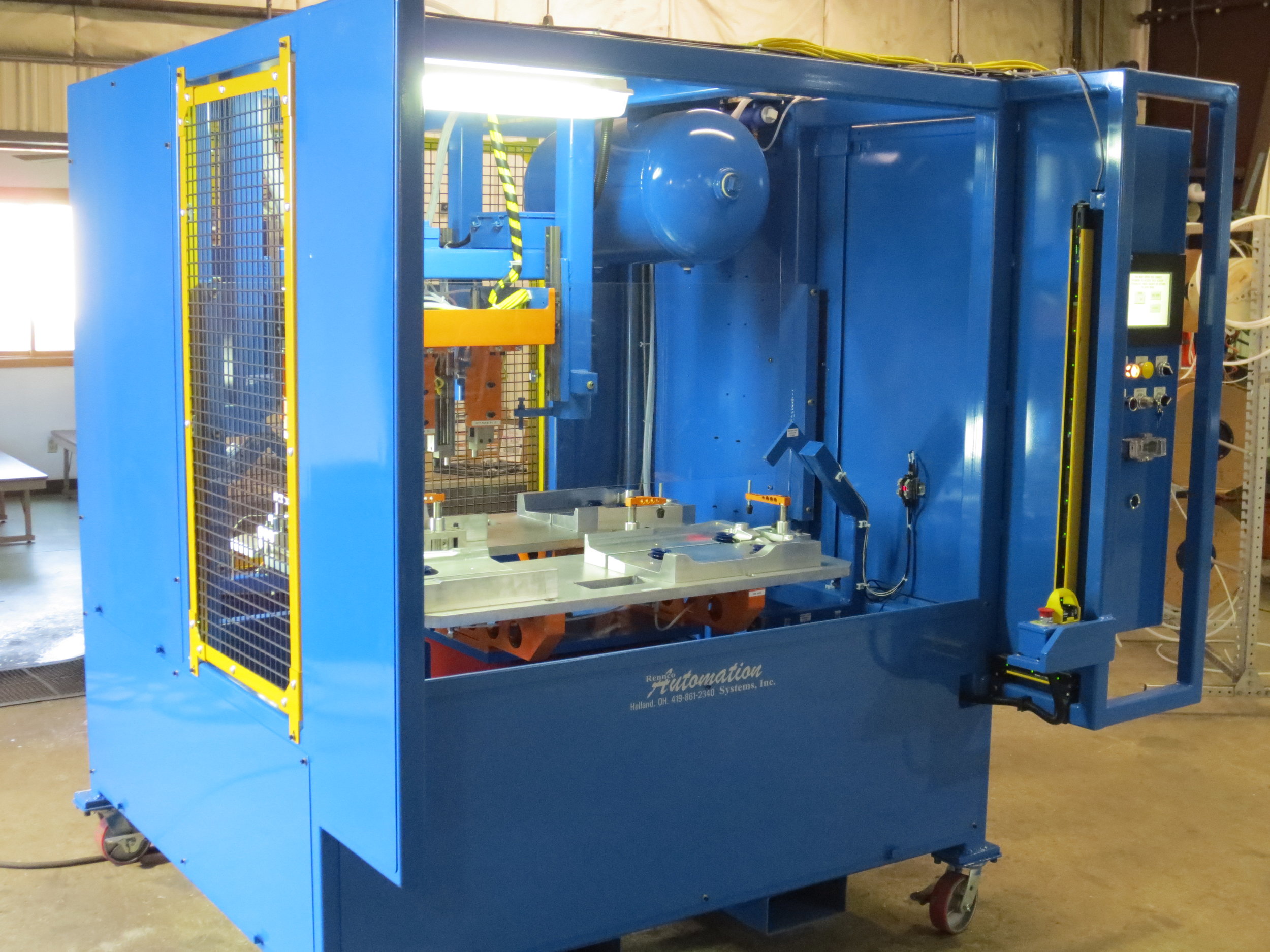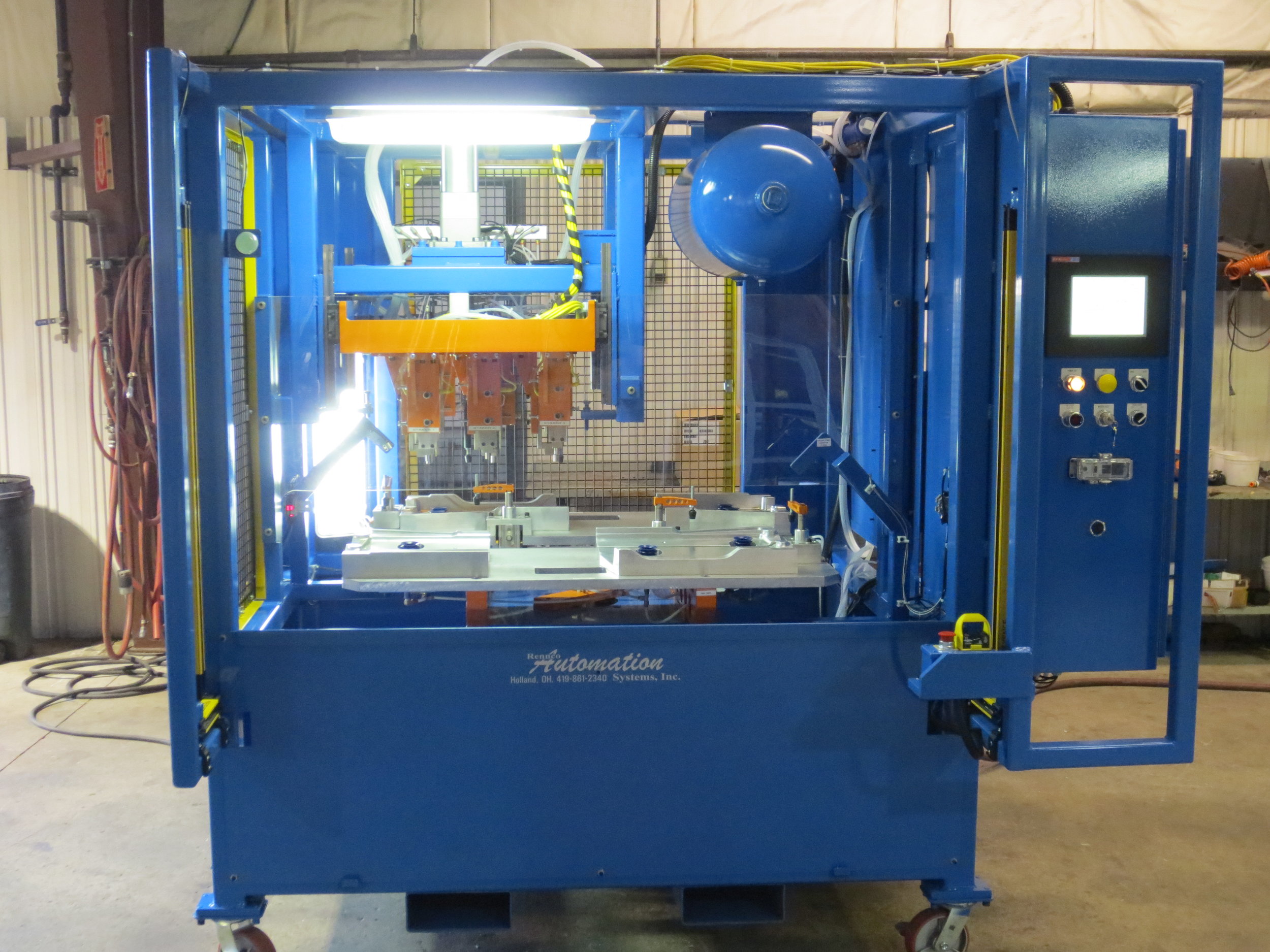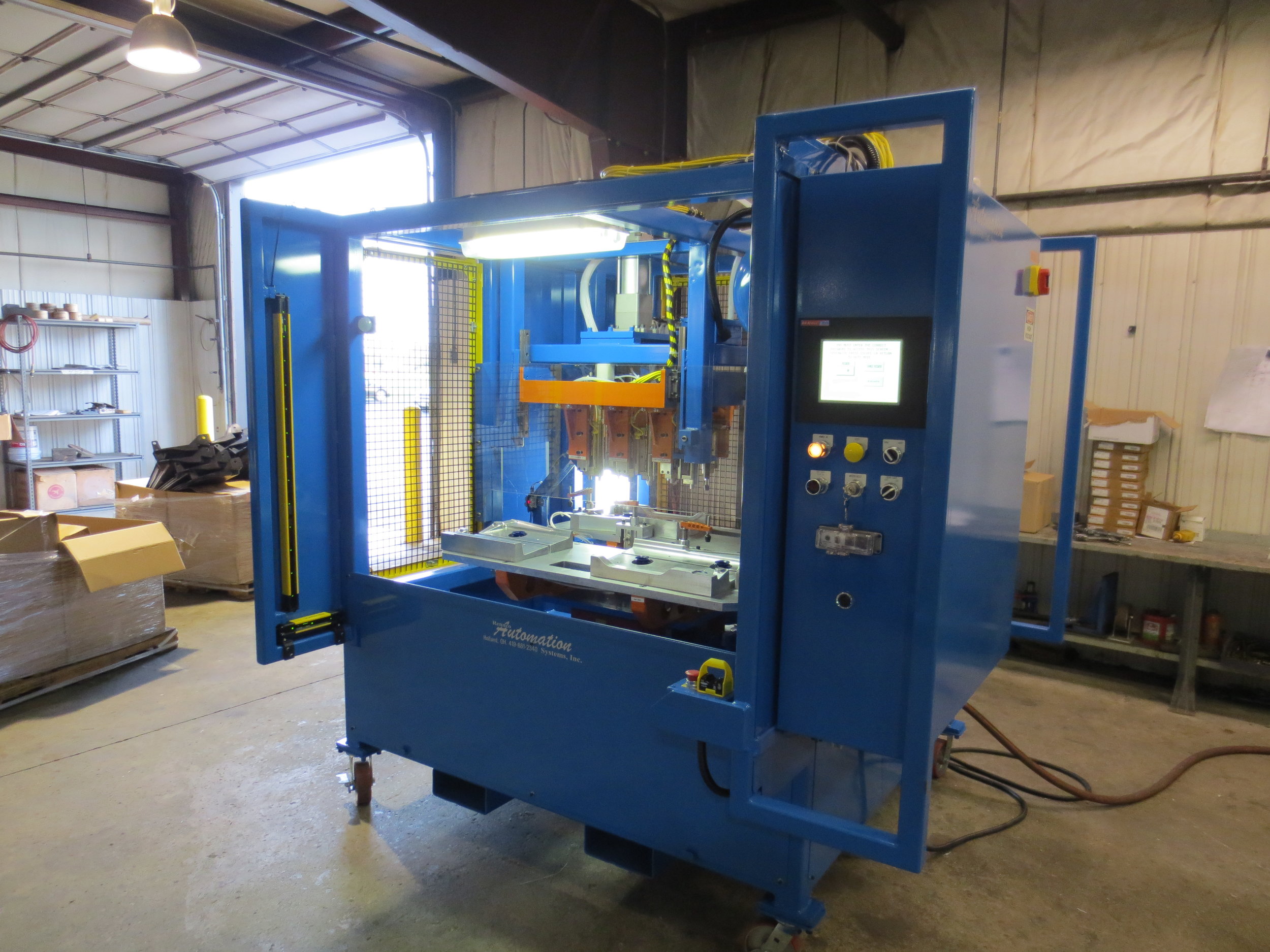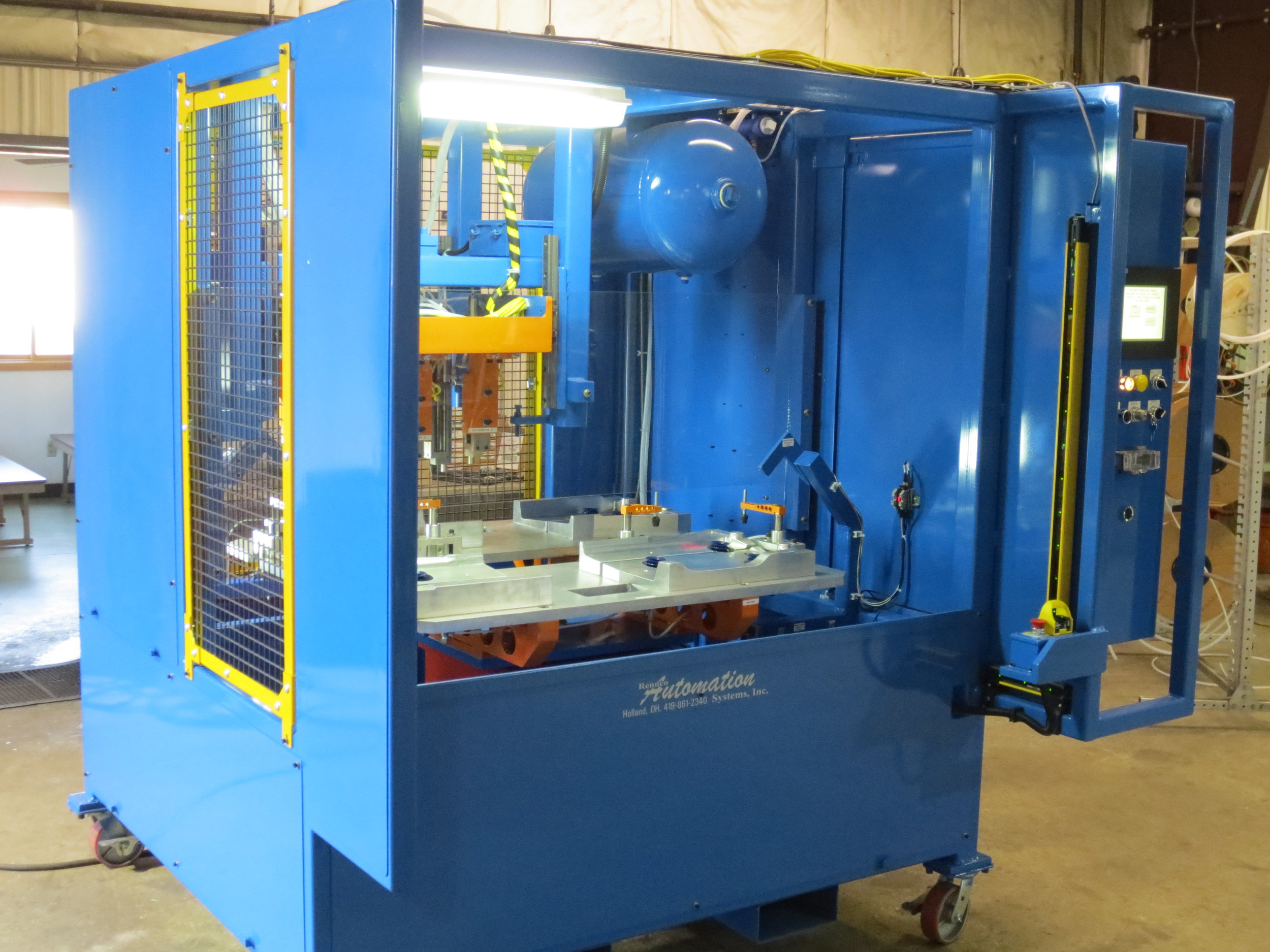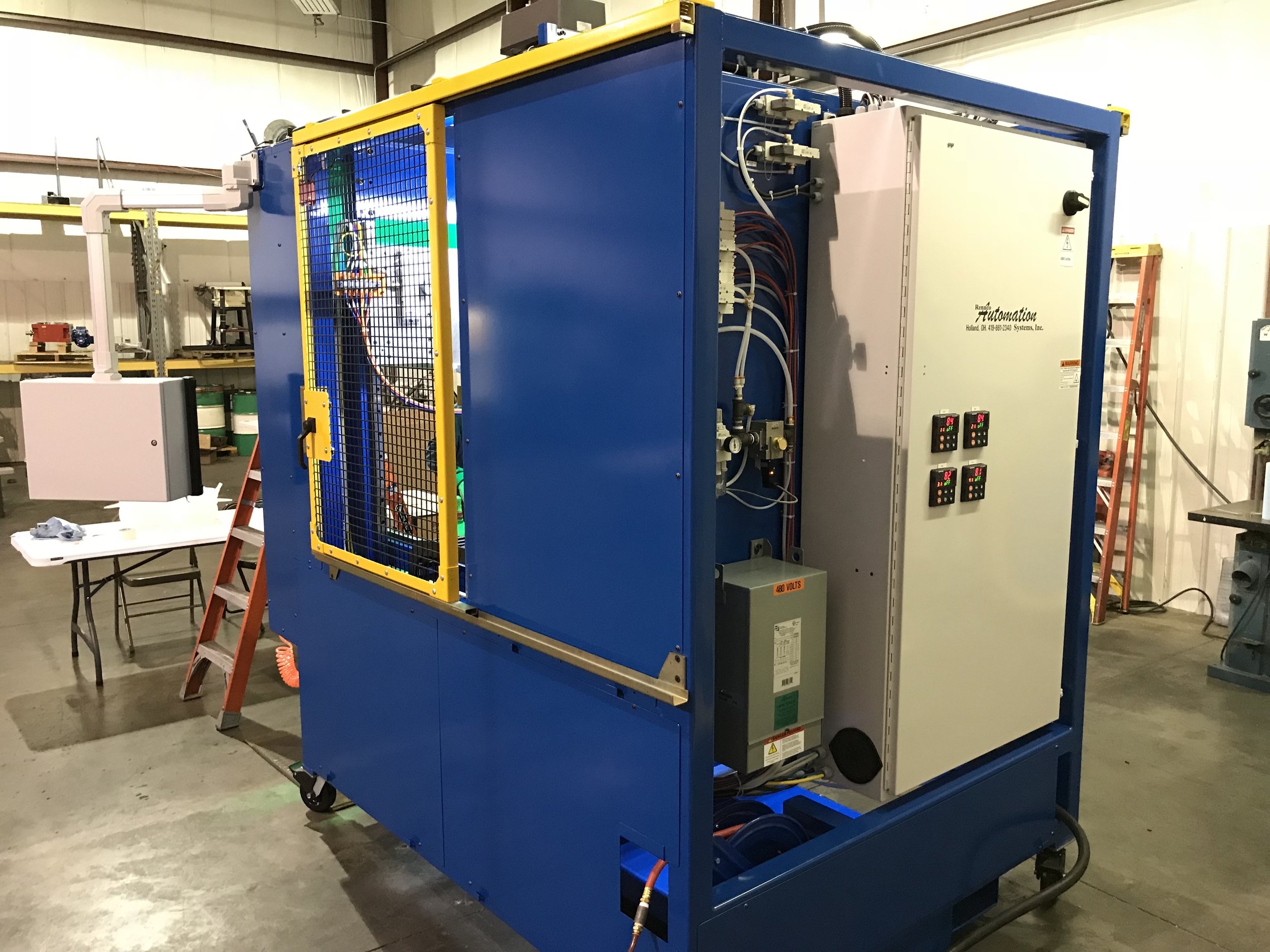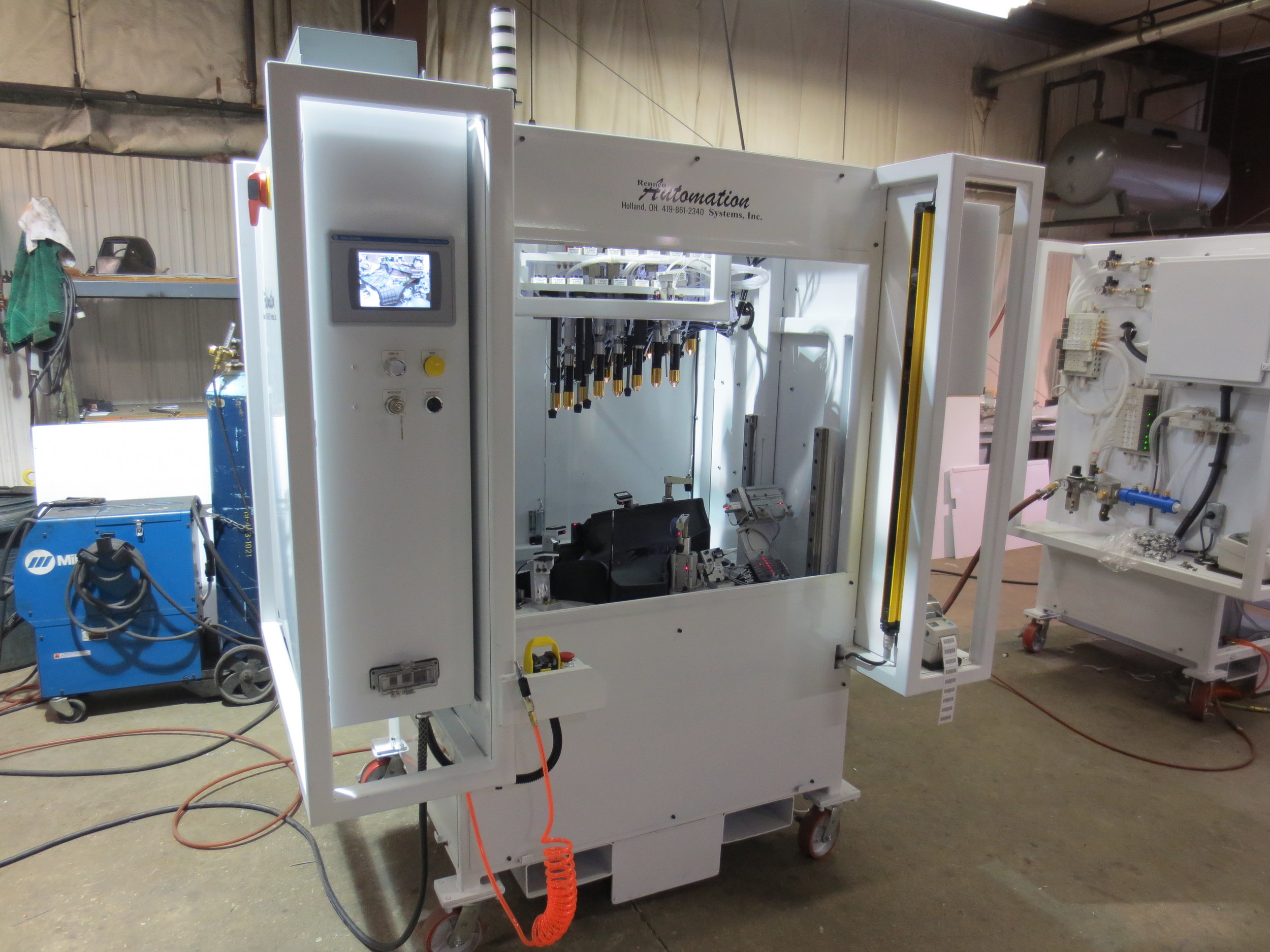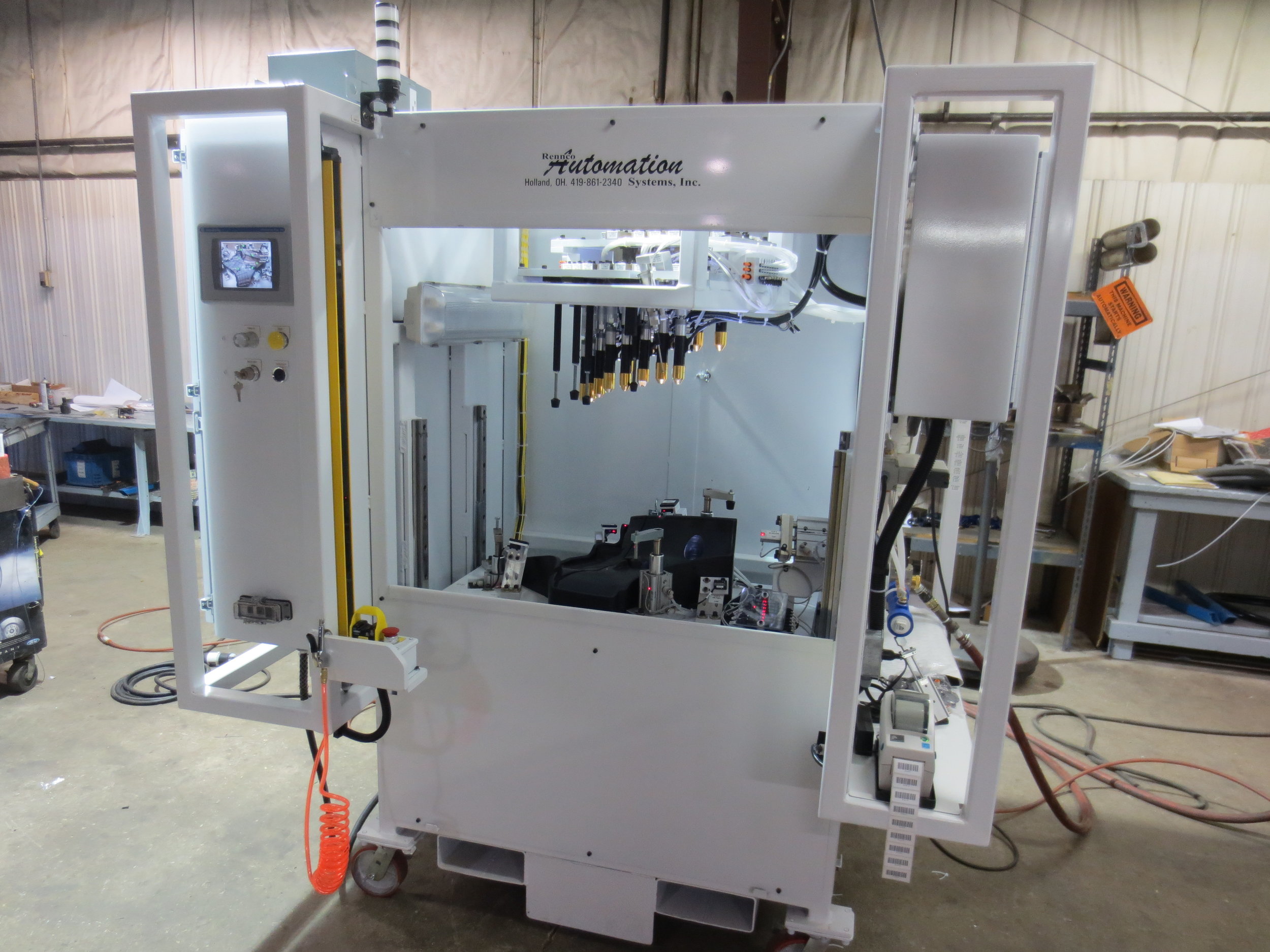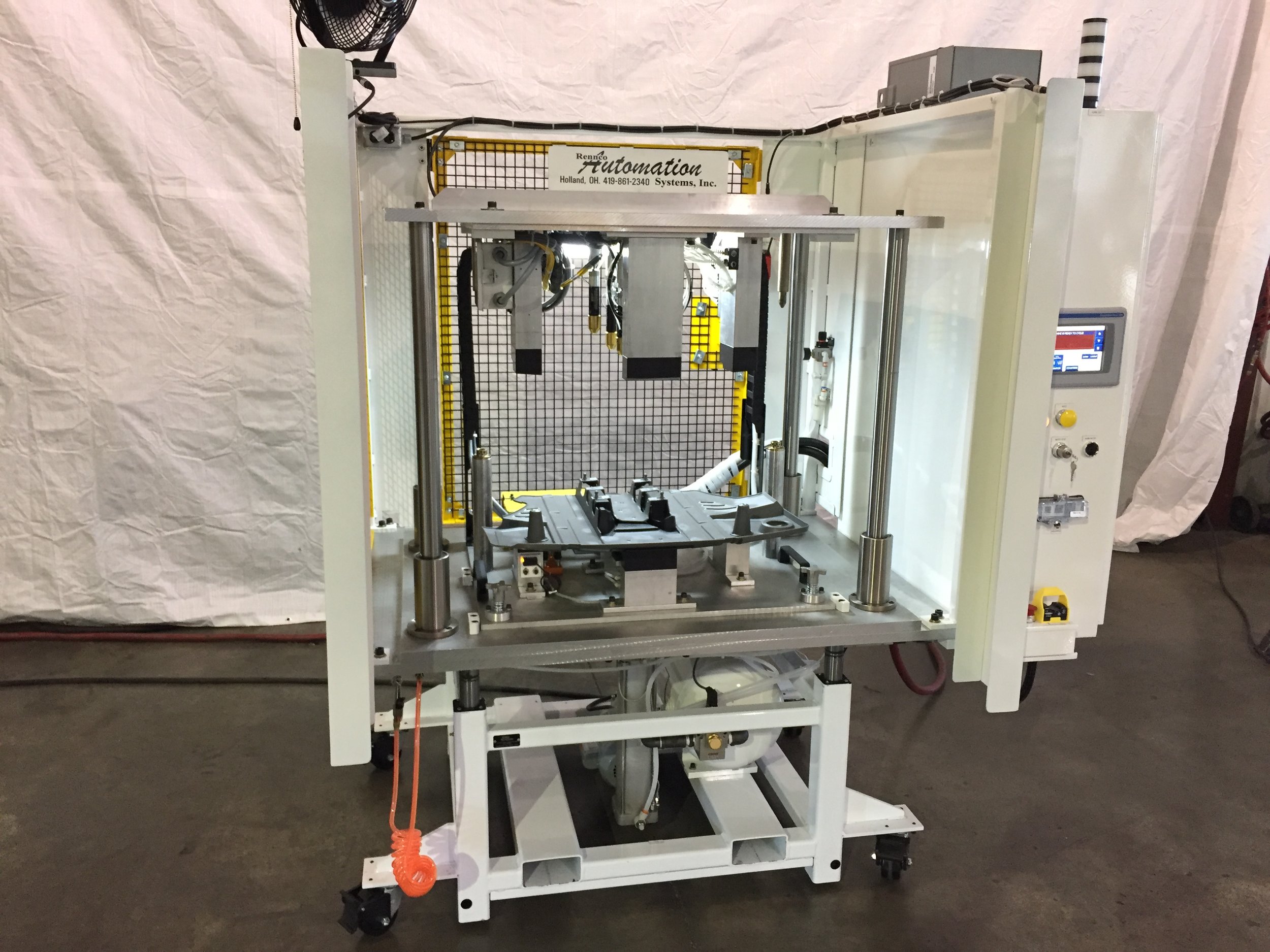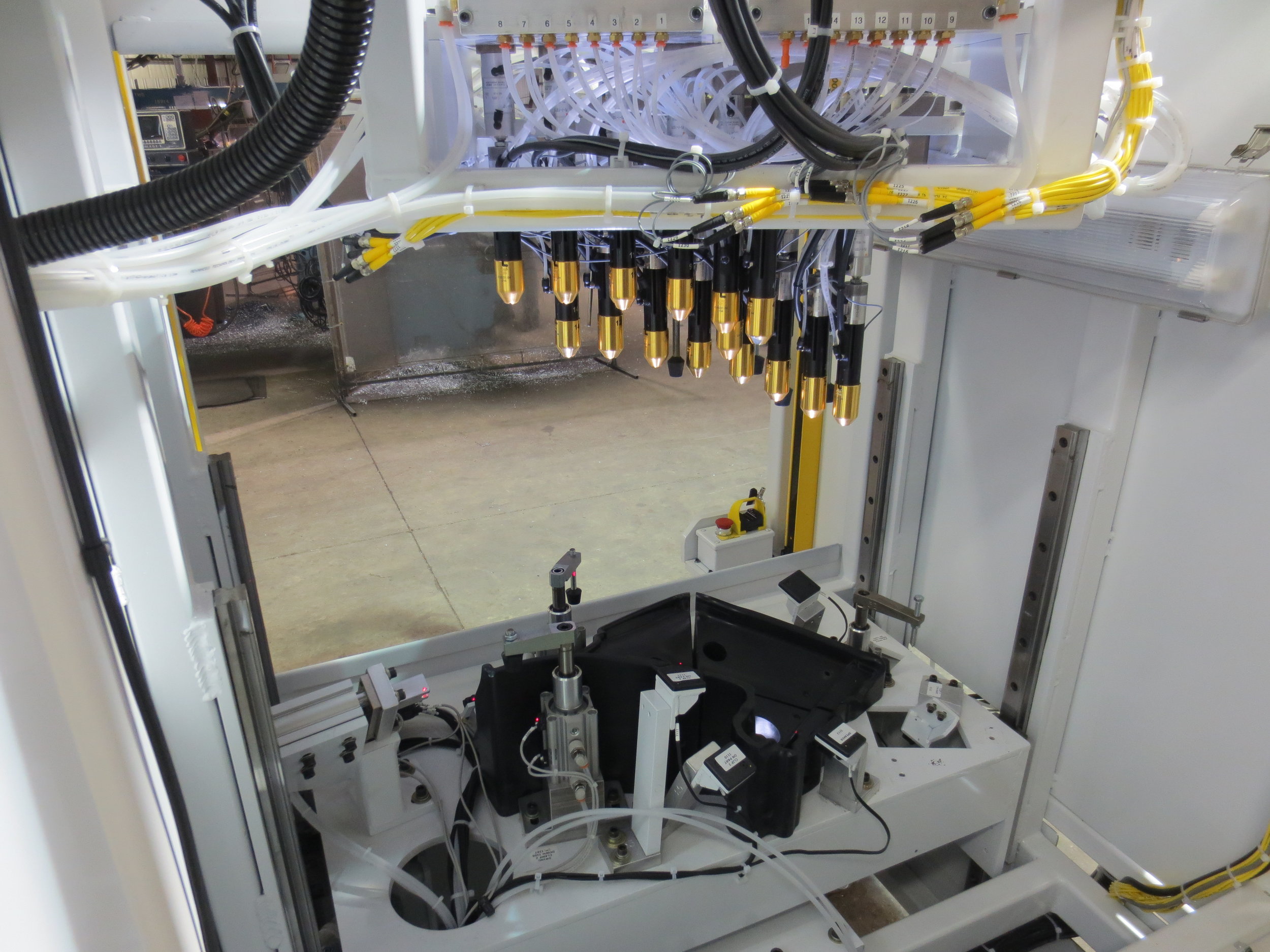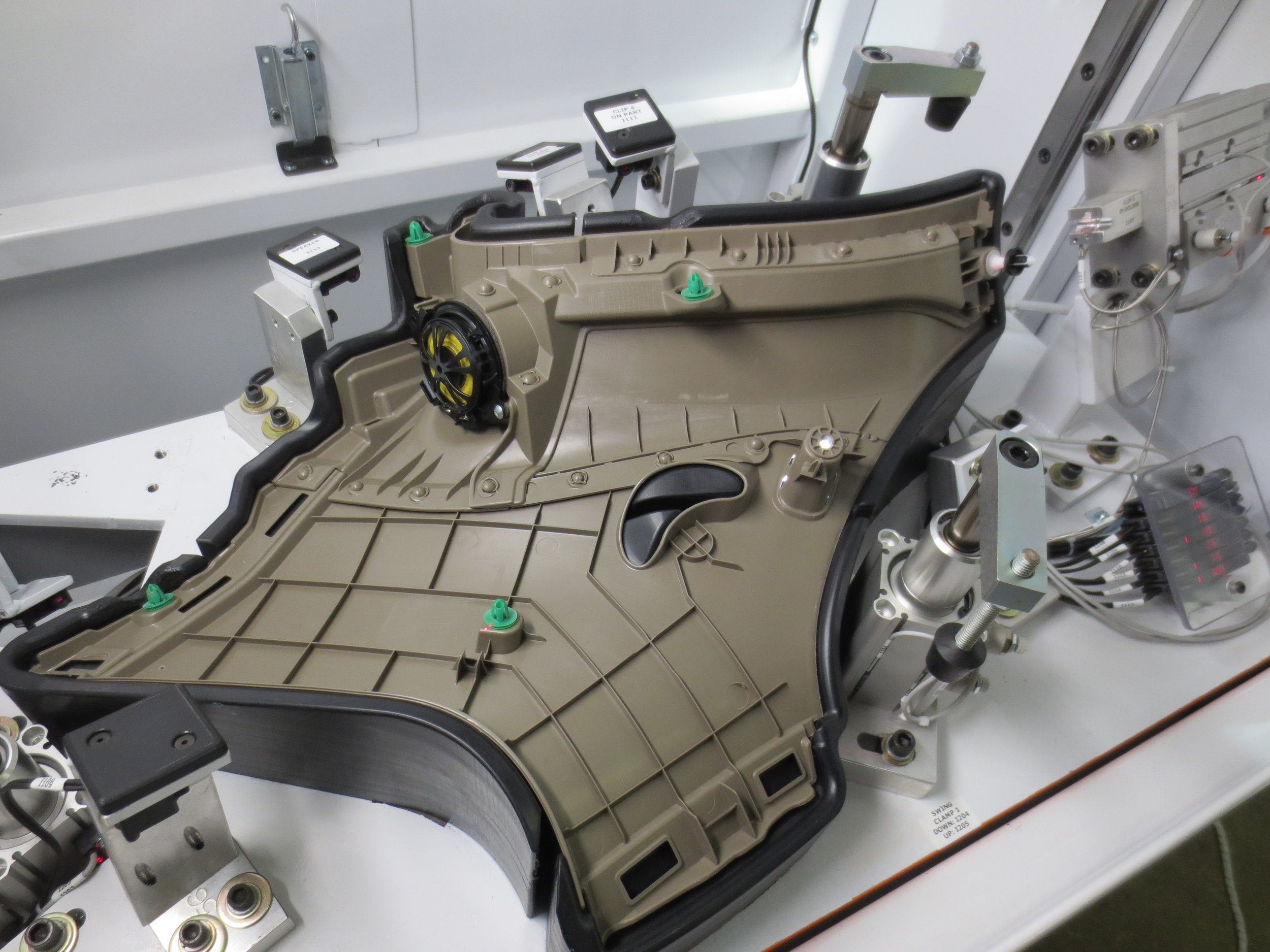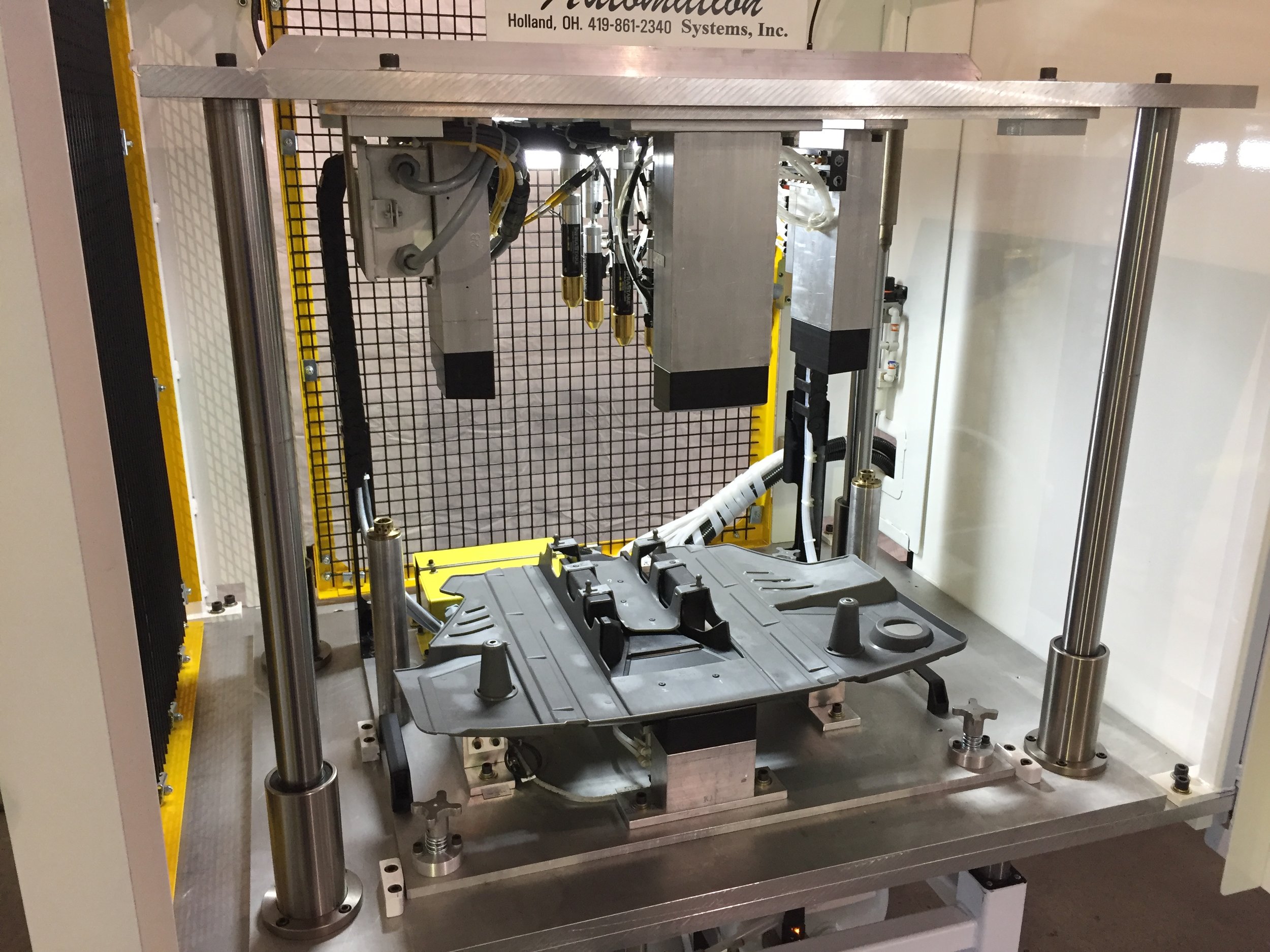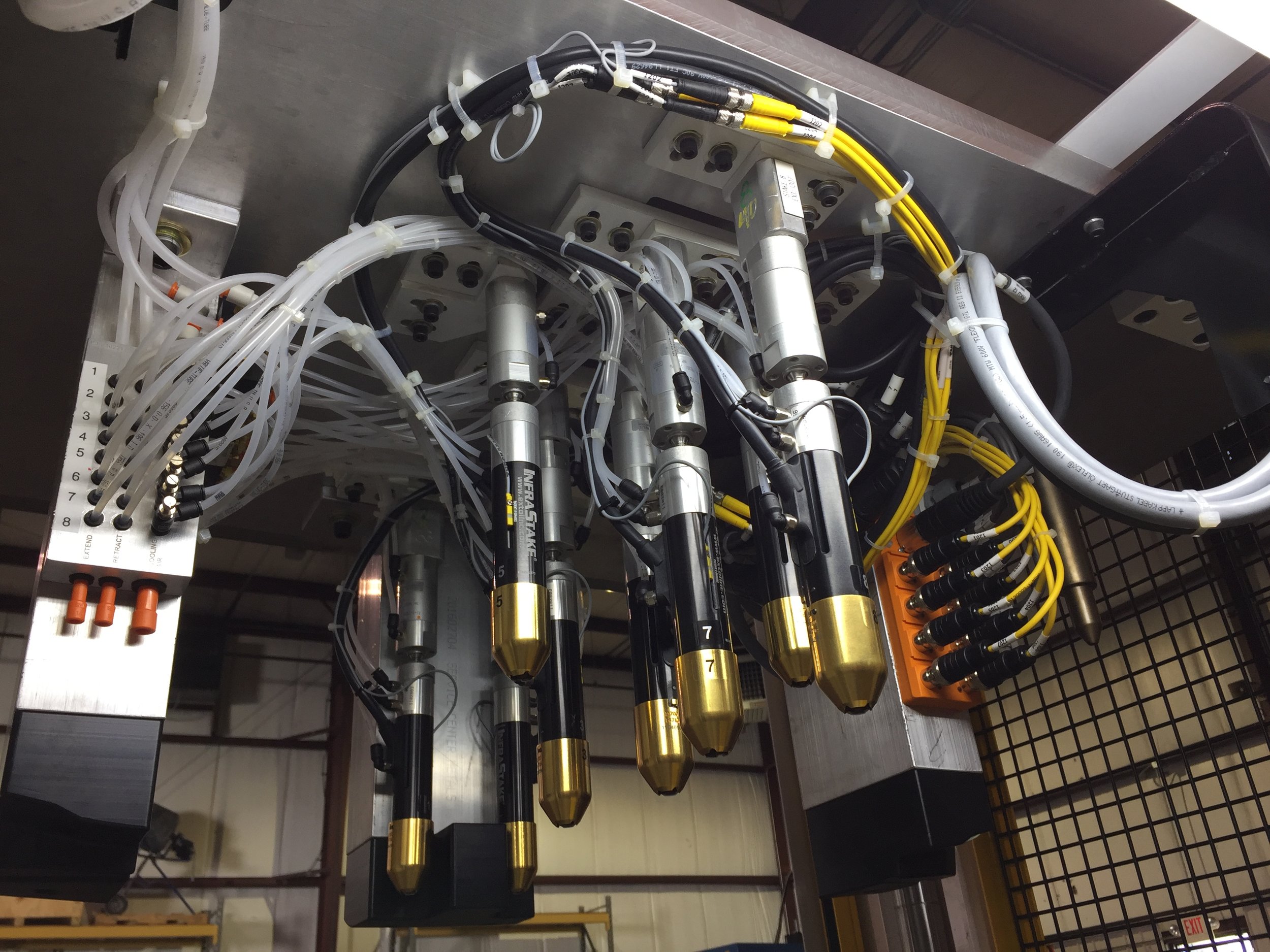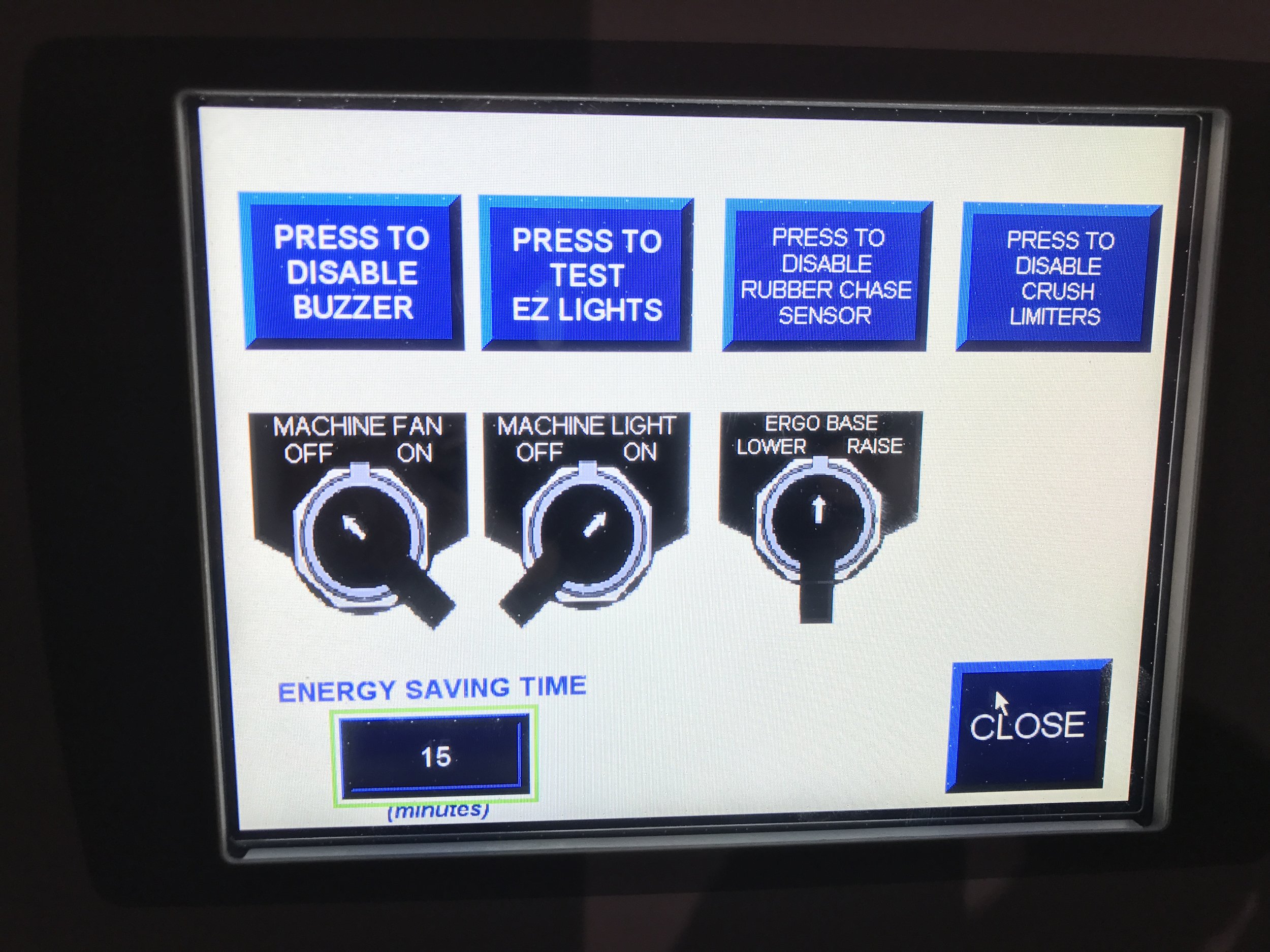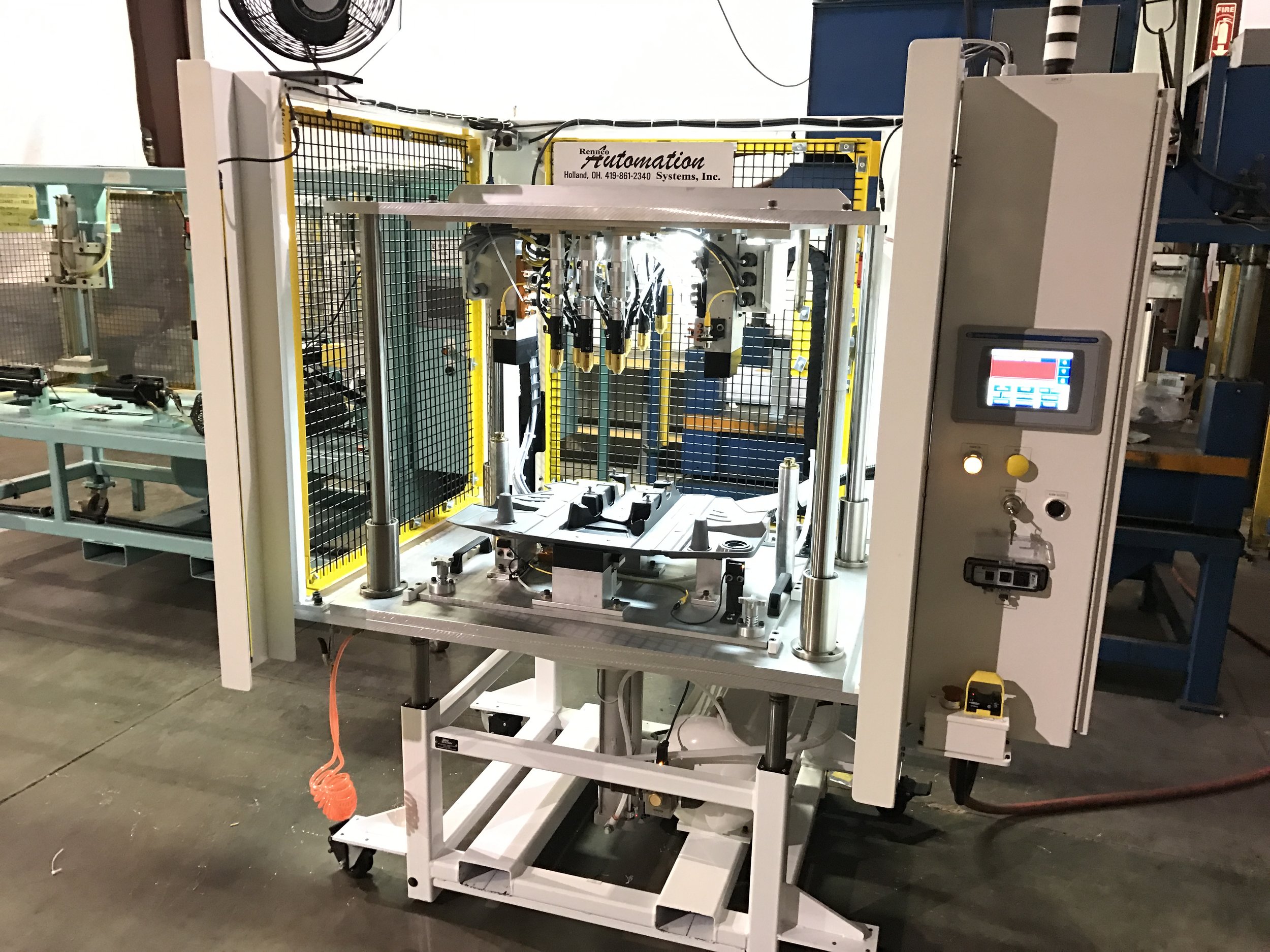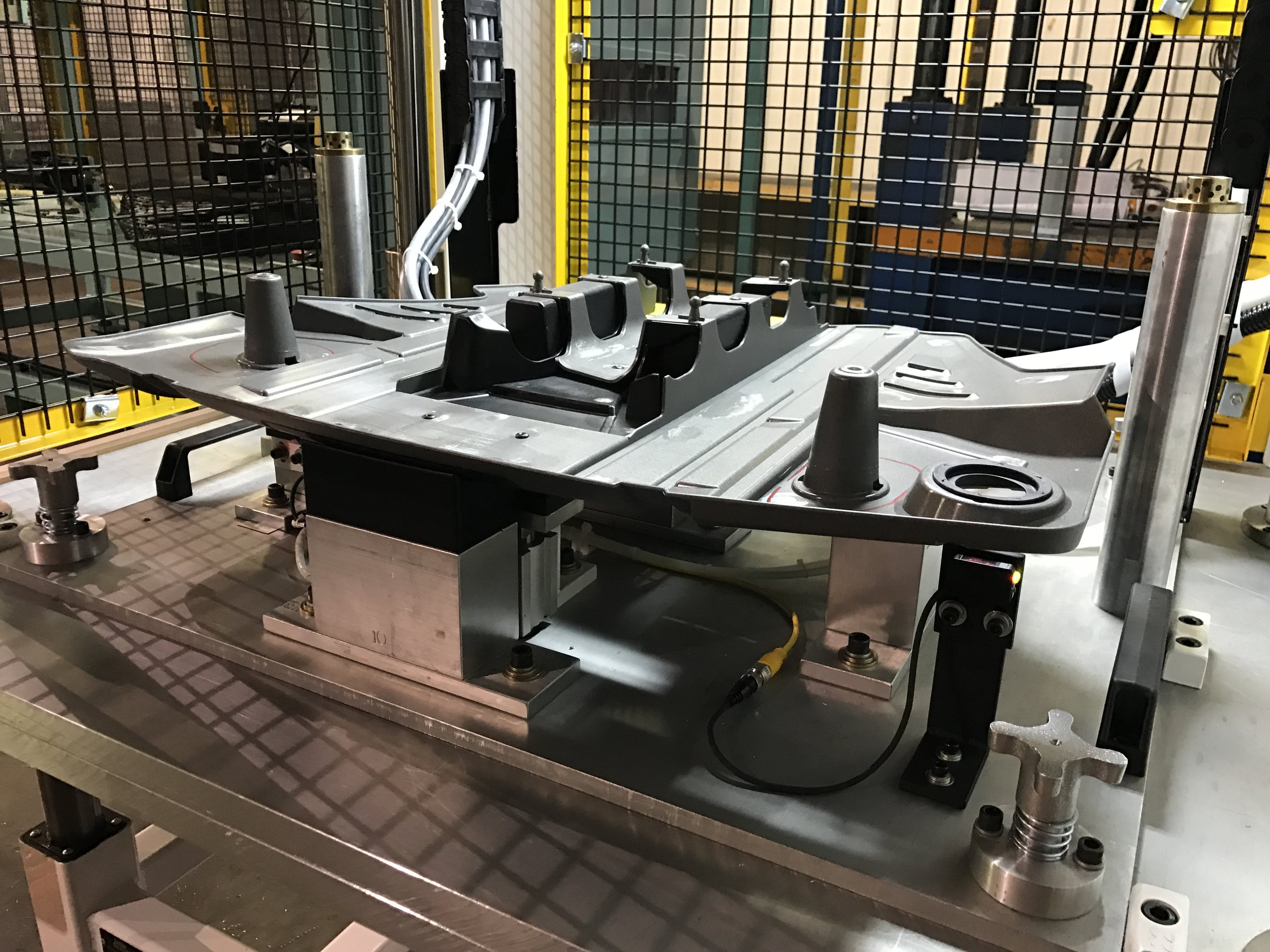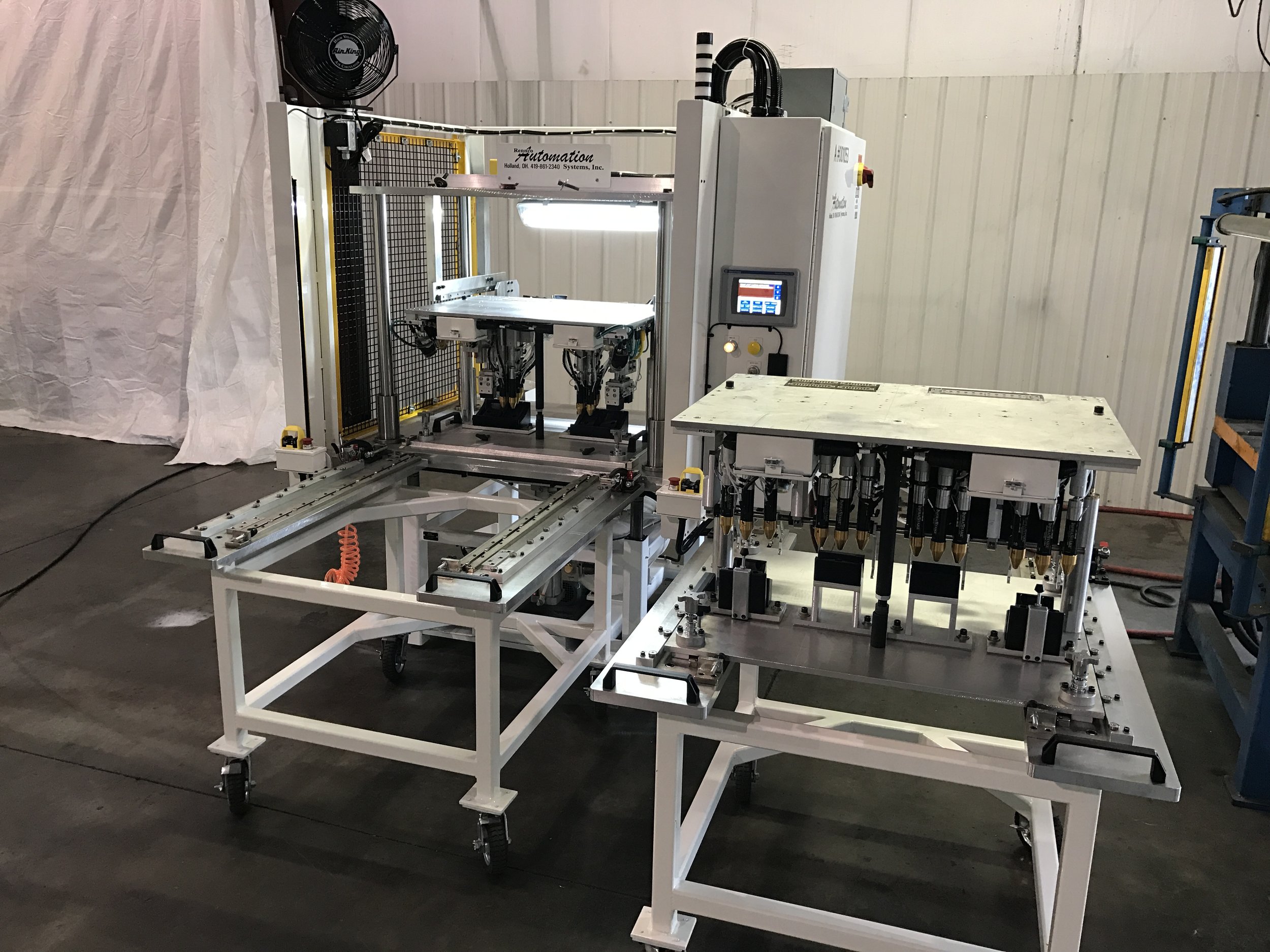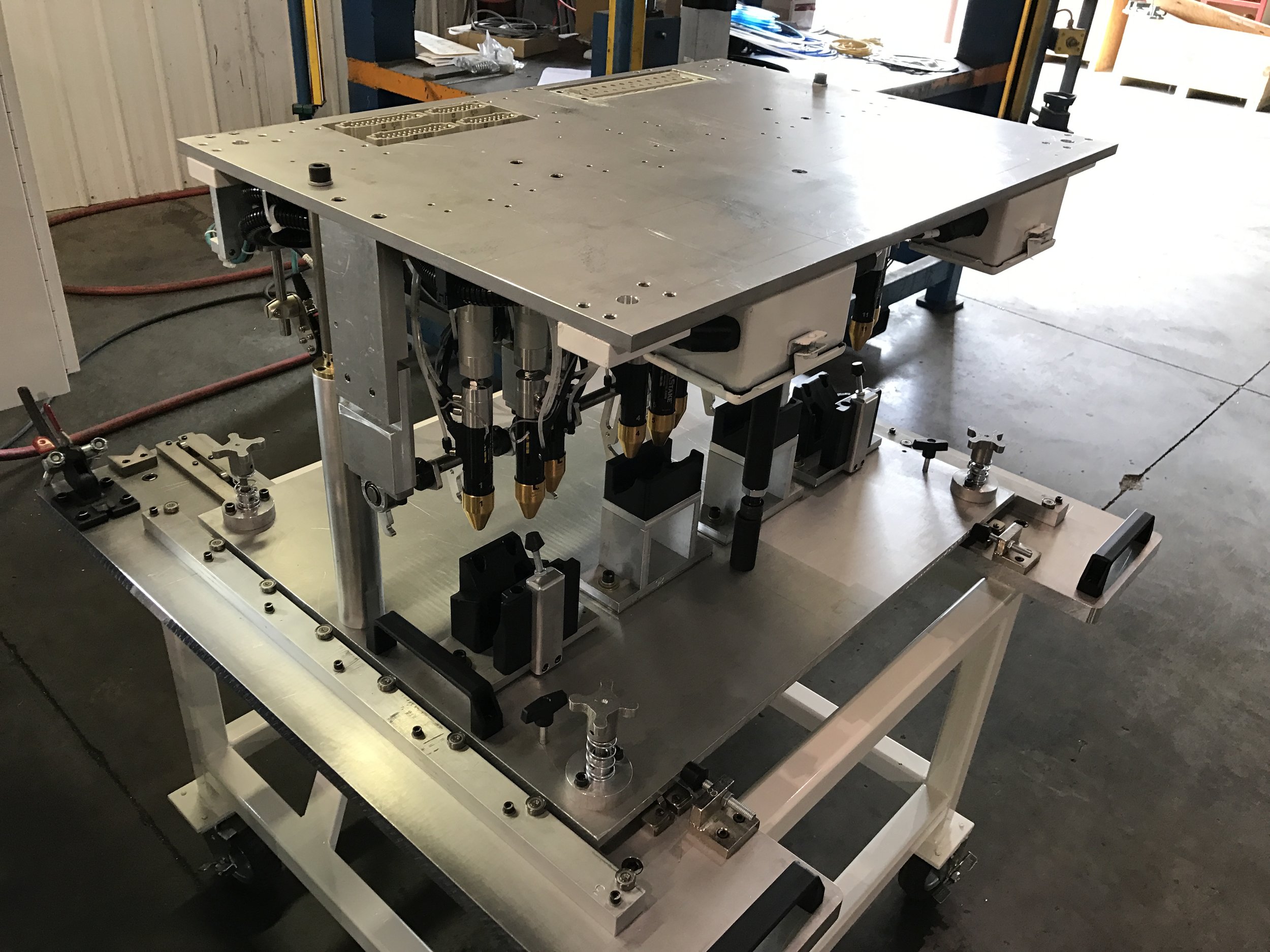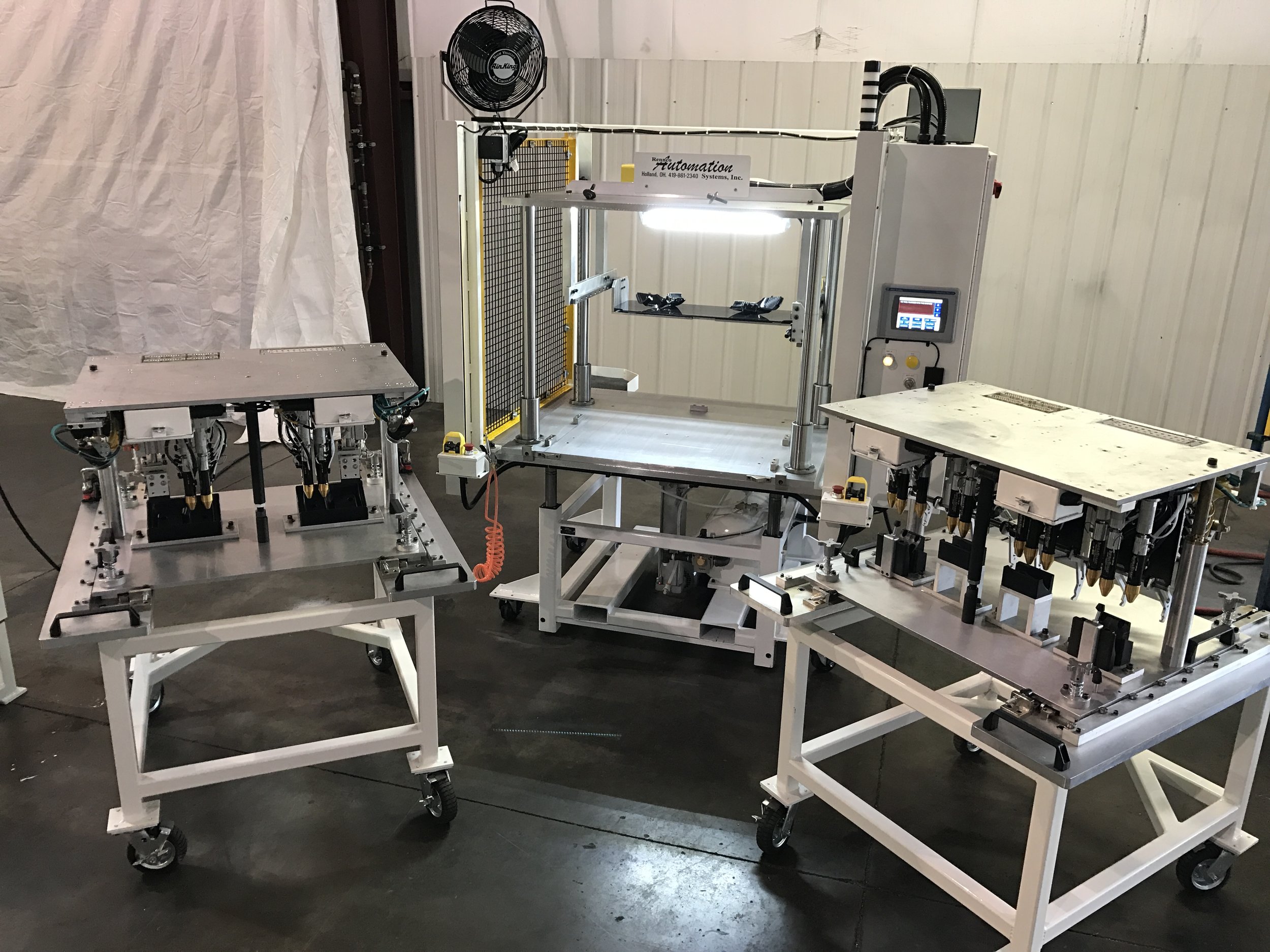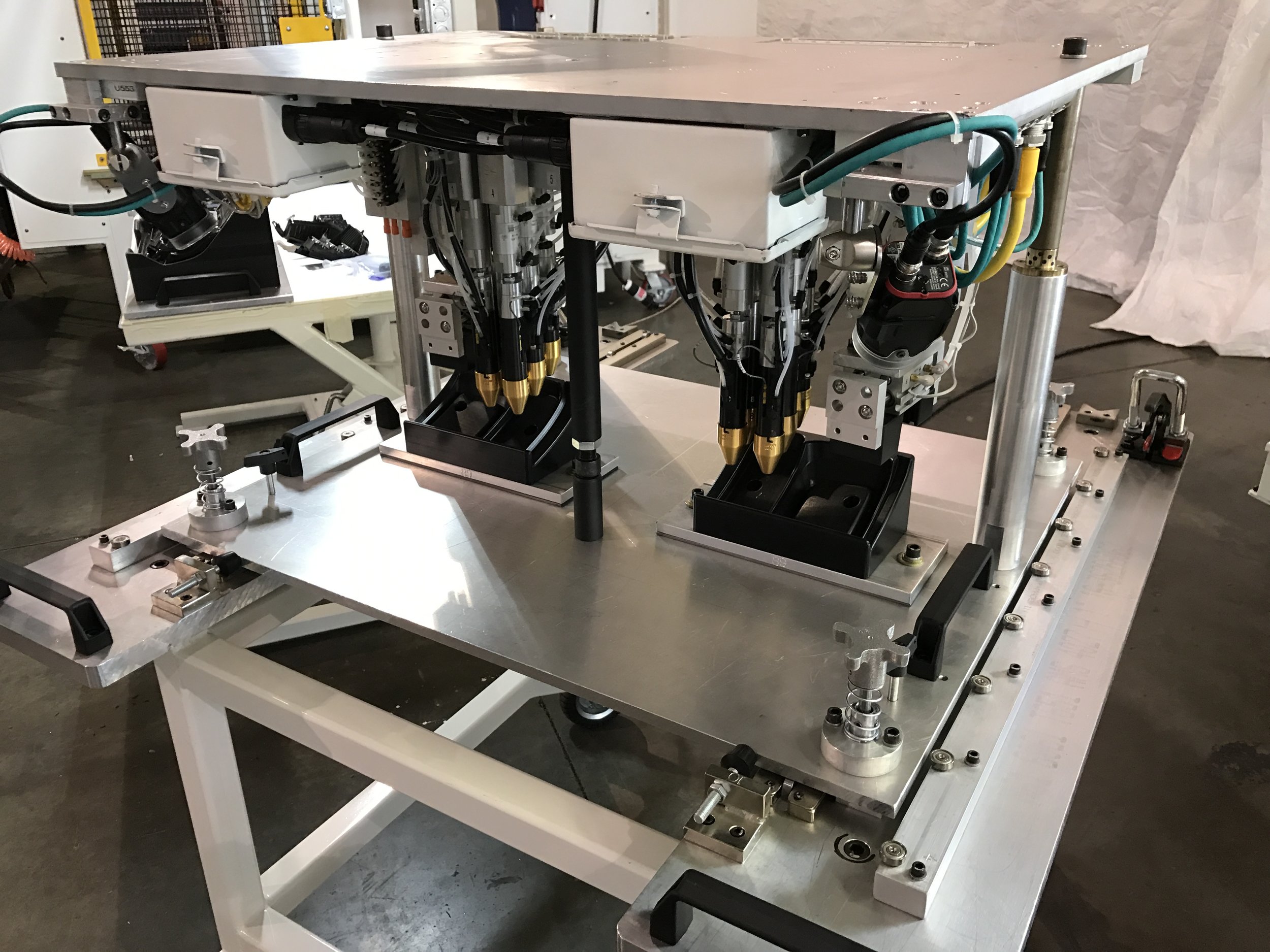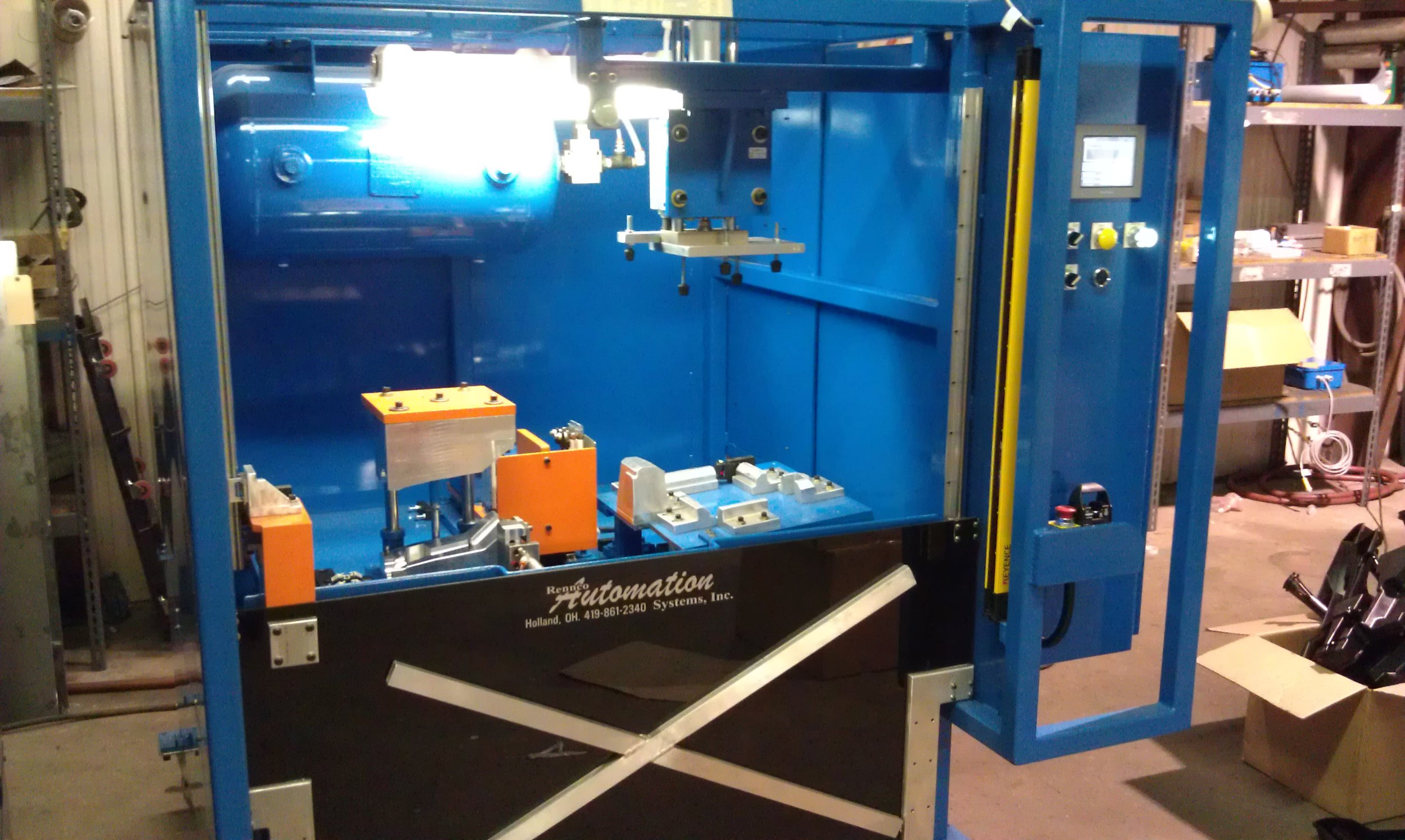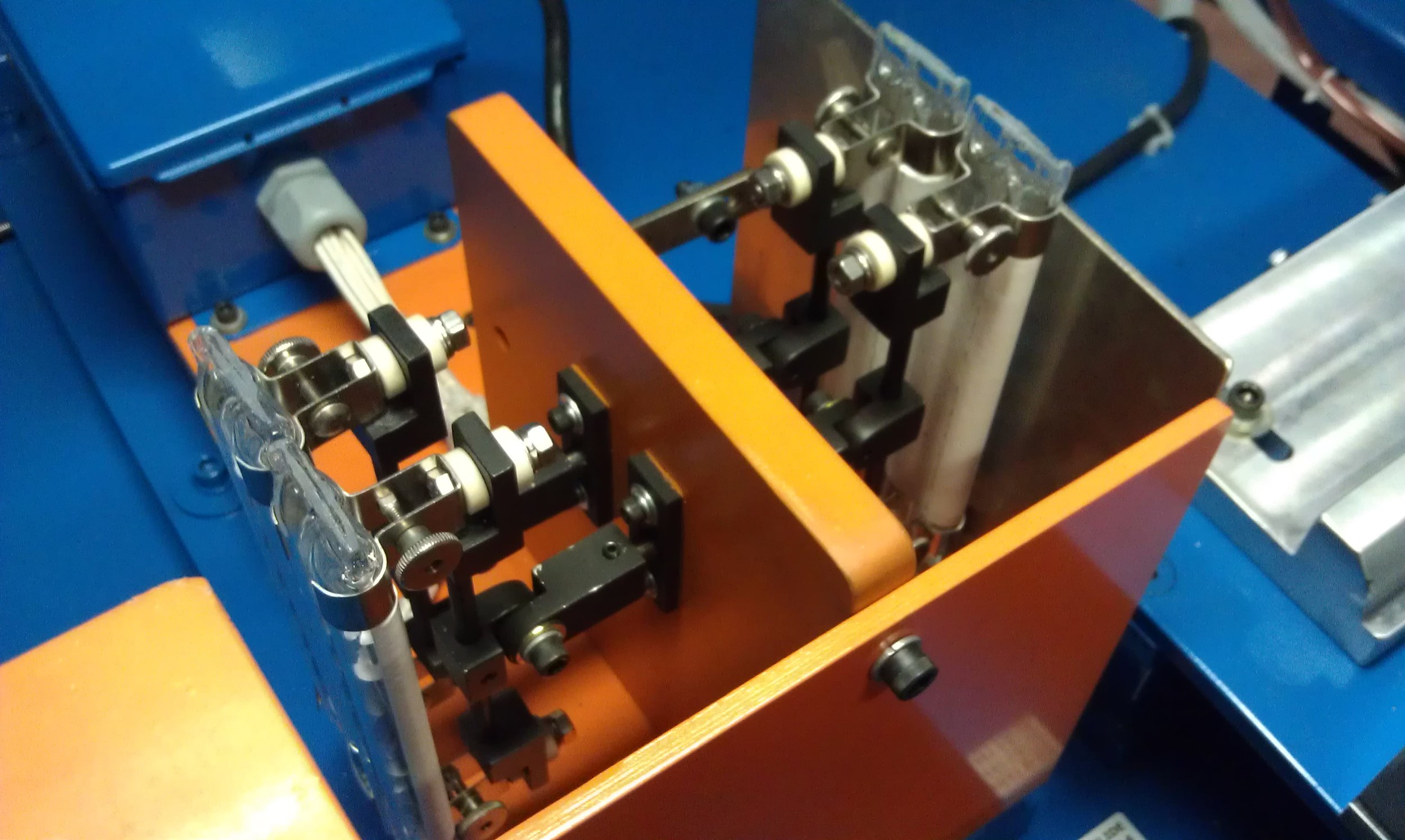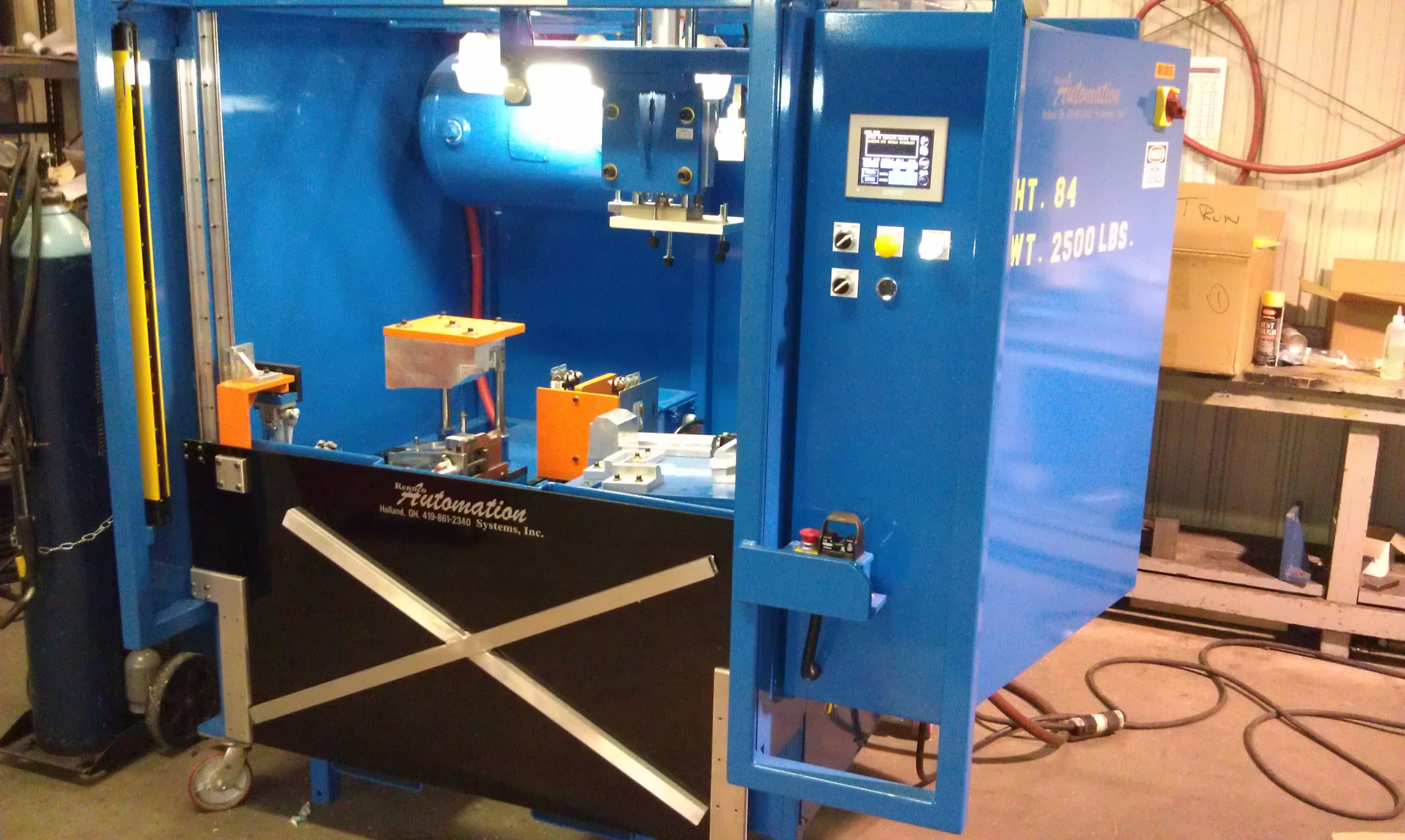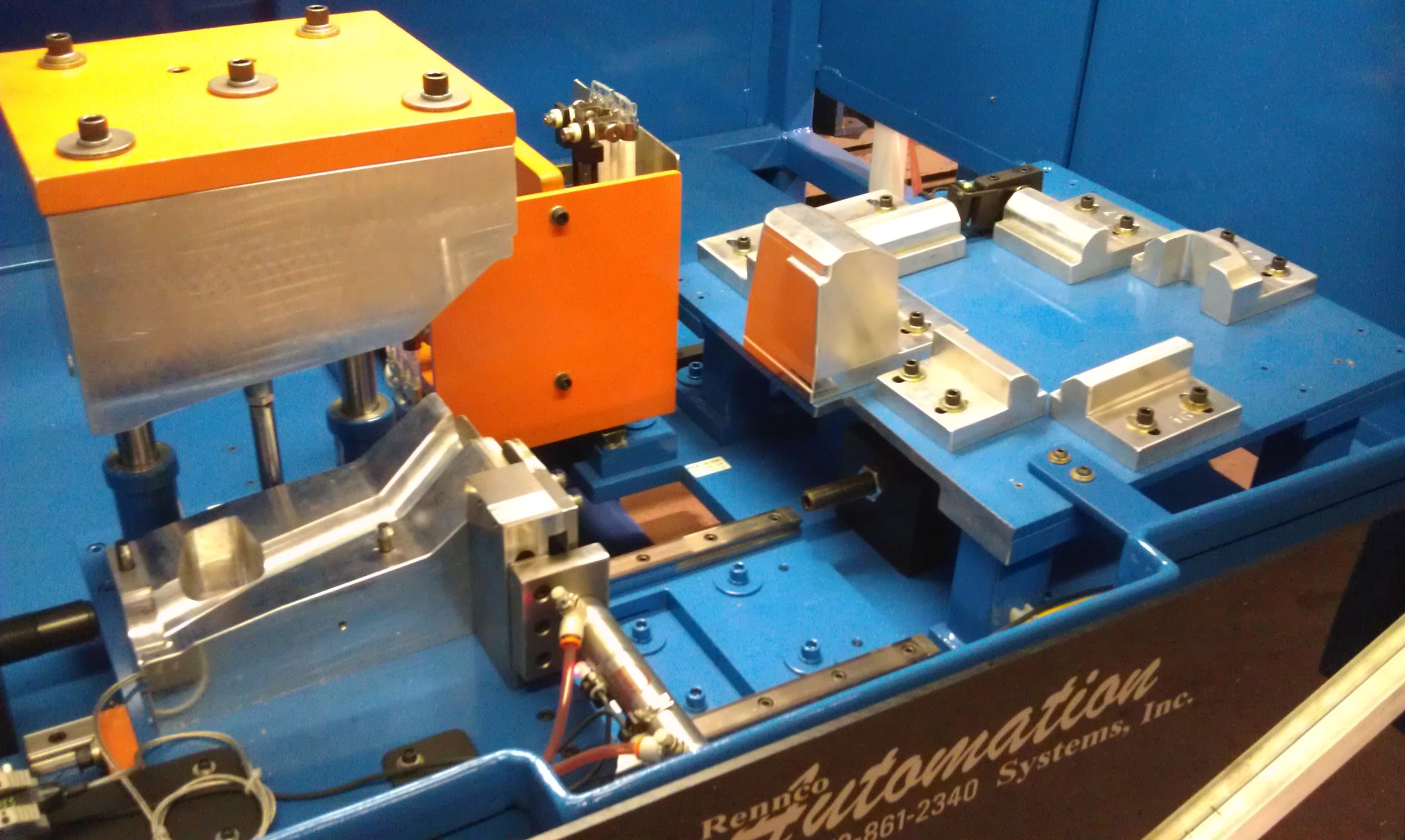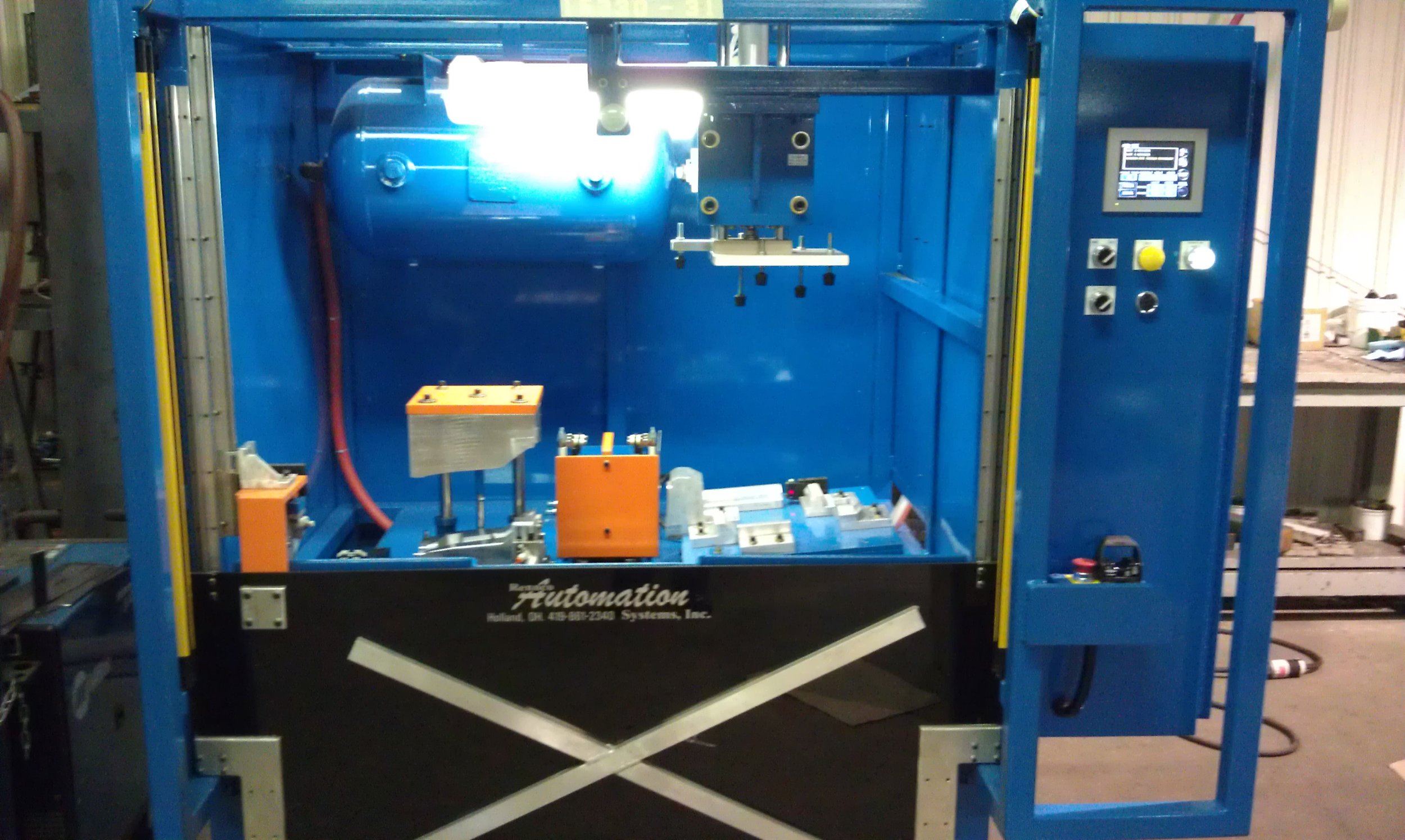Our welding machines are used to bond like materials and even sometimes unlike materials. We use several different methods to accomplish this, from fusion bonding - to ultrasonic welding - to infrared welding. No matter the method, there is an art to making welding machines.
uLTRA-SONIC wELDING
An industrial technique whereby high-frequency ultrasonic acoustic vibrations are locally applied to work pieces being held together under pressure to create a solid-state weld. It is commonly used for plastics. Ultrasonic welding alleviates the need for bolts, nails, soldering, or adhesives necessary to bind the materials together. For Robotic Ultra-Sonic Welding, click here
Hot plate welding
A method of joining two compatible materials together by first melting each piece, then holding the pieces together to set. Orchestrating heat, pressure, and timing coupled with a wealth of experience makes this an easy task for us. This is one of our specialties here at Rennco and we have welded many types of components to tanks, ducts, bottles and etc.
HEAT STAKING
A method used primarily to melt over tabs to secure two materials together. For speed of setting the melted material, a cold set is applied within the tooling
UNIVERSAL SERVO DRIVEN
This is a standardized machine for Rennco, available in various force capabilities and machine frame sizes. These machines combine our hot plate welding method with servo driven cylinders, allowing the option of precision bonding of materials to specific depths, or even based on force applied to the material.
Infrastake weld
Infrastake welding is similar to spot welding, using concentrated, reflected infrared bulbs to super heat material prior to using a built-in cold punch to set the material. This is typically done to molded plastic bosses or stems, prior to the bosses being smashed with the cold punch, having the end effect of riveting two parts together.
Ir weld
Infrared welding is not the same as infrastake welding, but more so hot plate welding. Infrared bulbs are placed in a pattern that mirrors the parts that need welding. The parts are melted by the hot bulbs and then sandwiched together for a set duration to bond the parts together.


